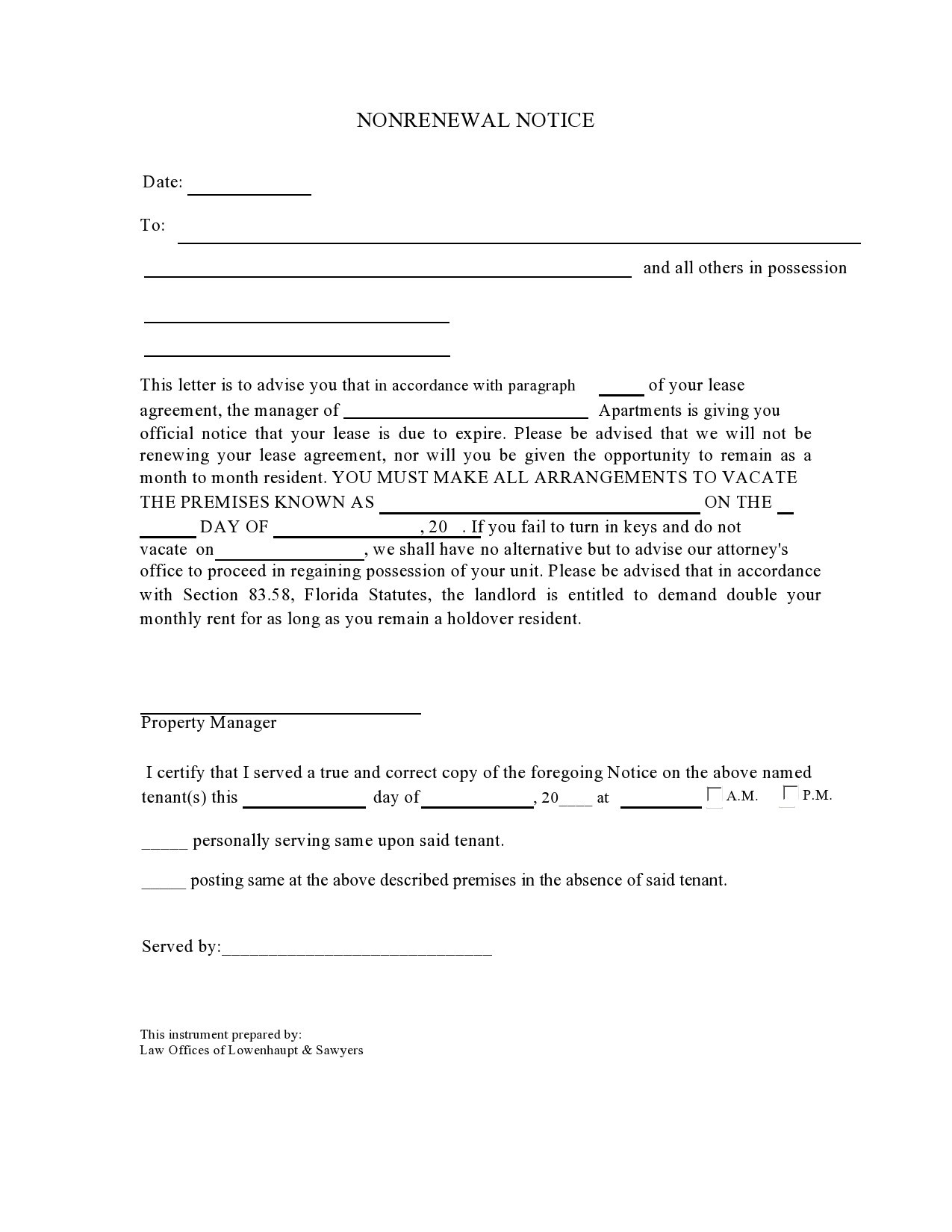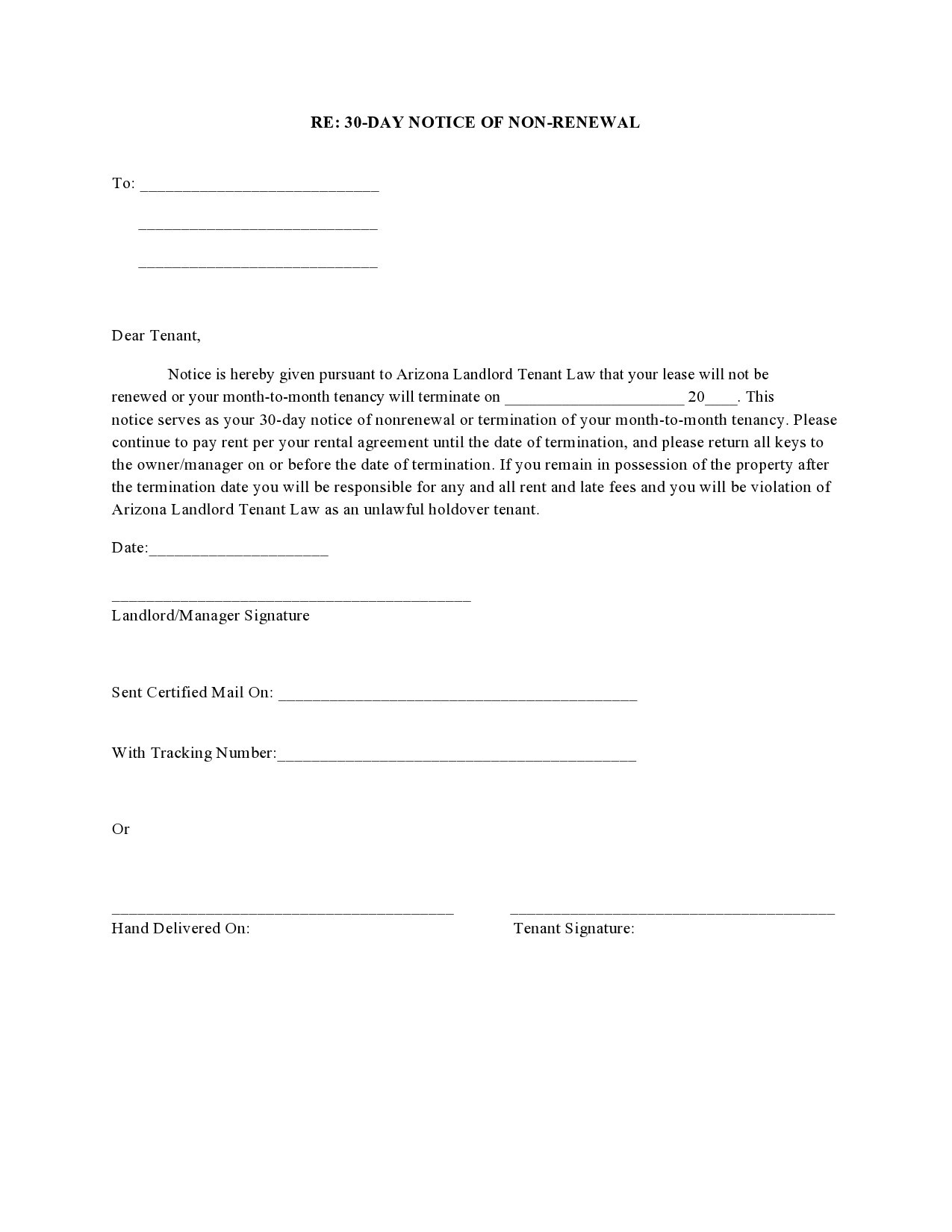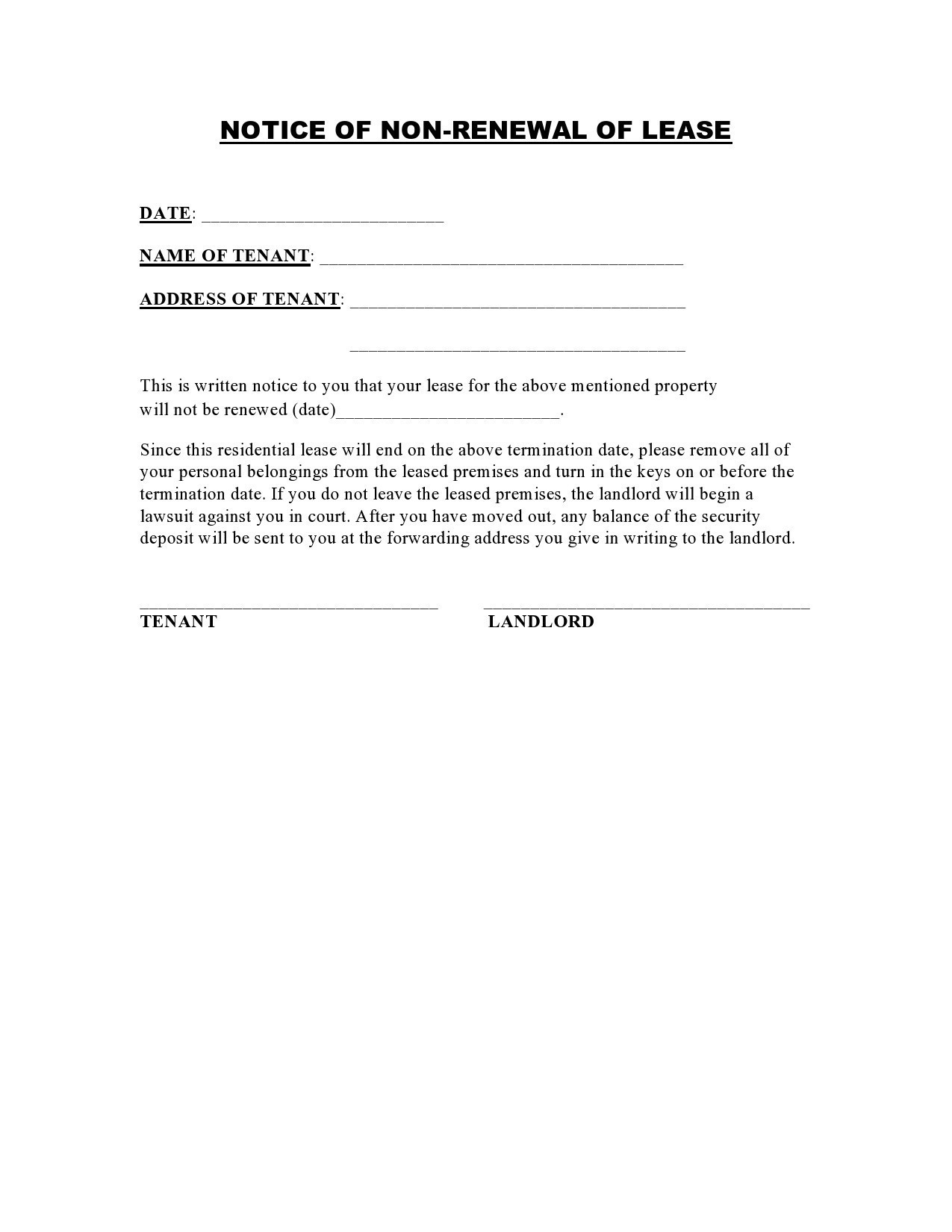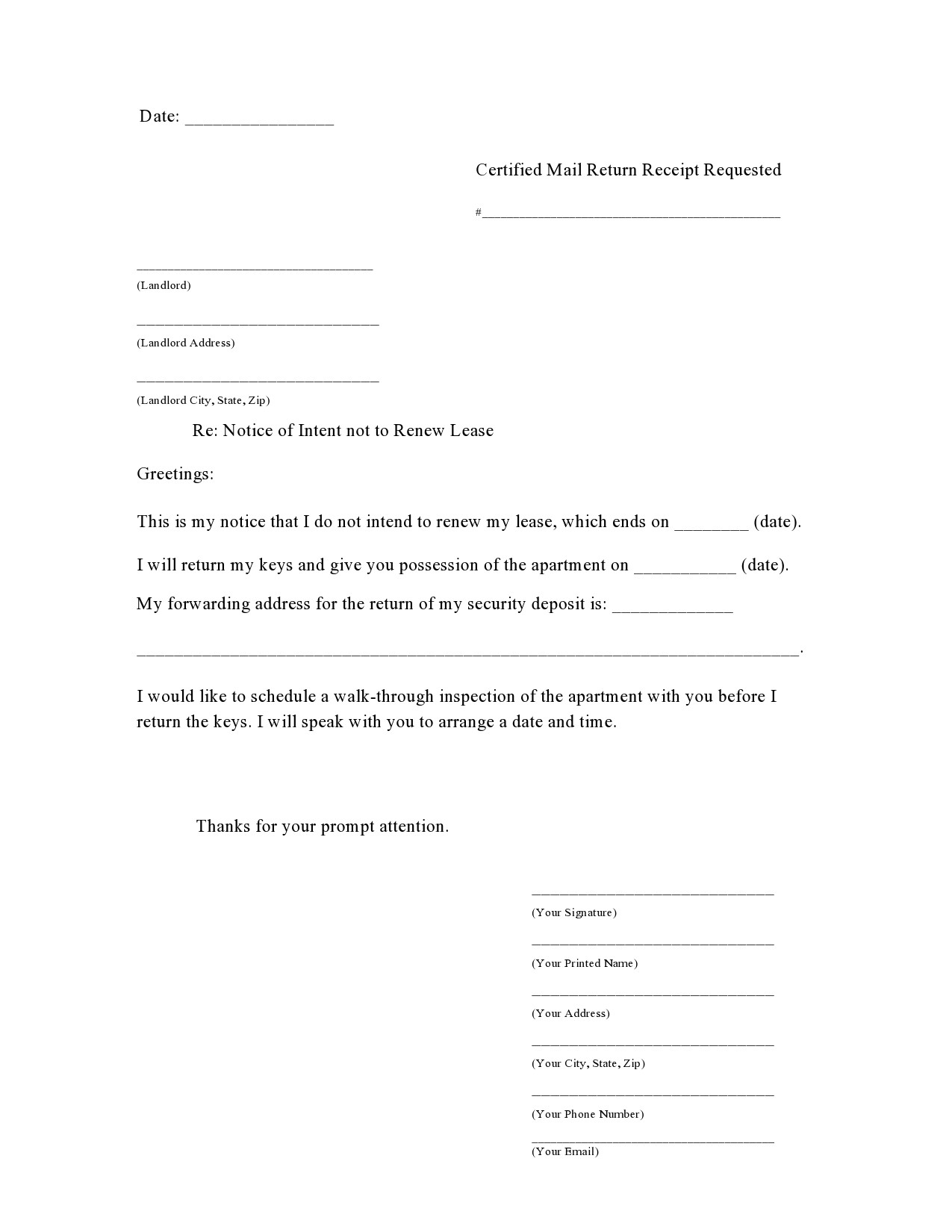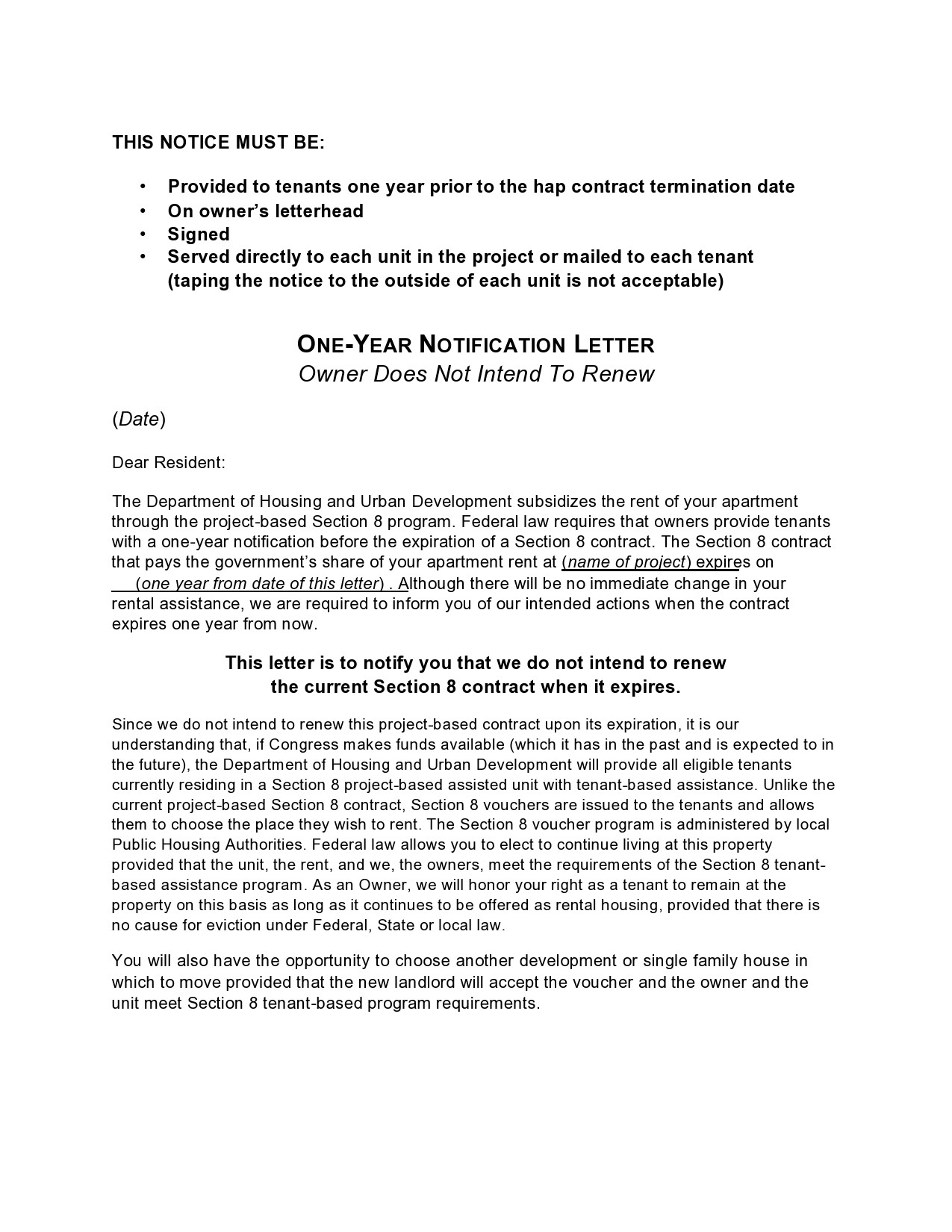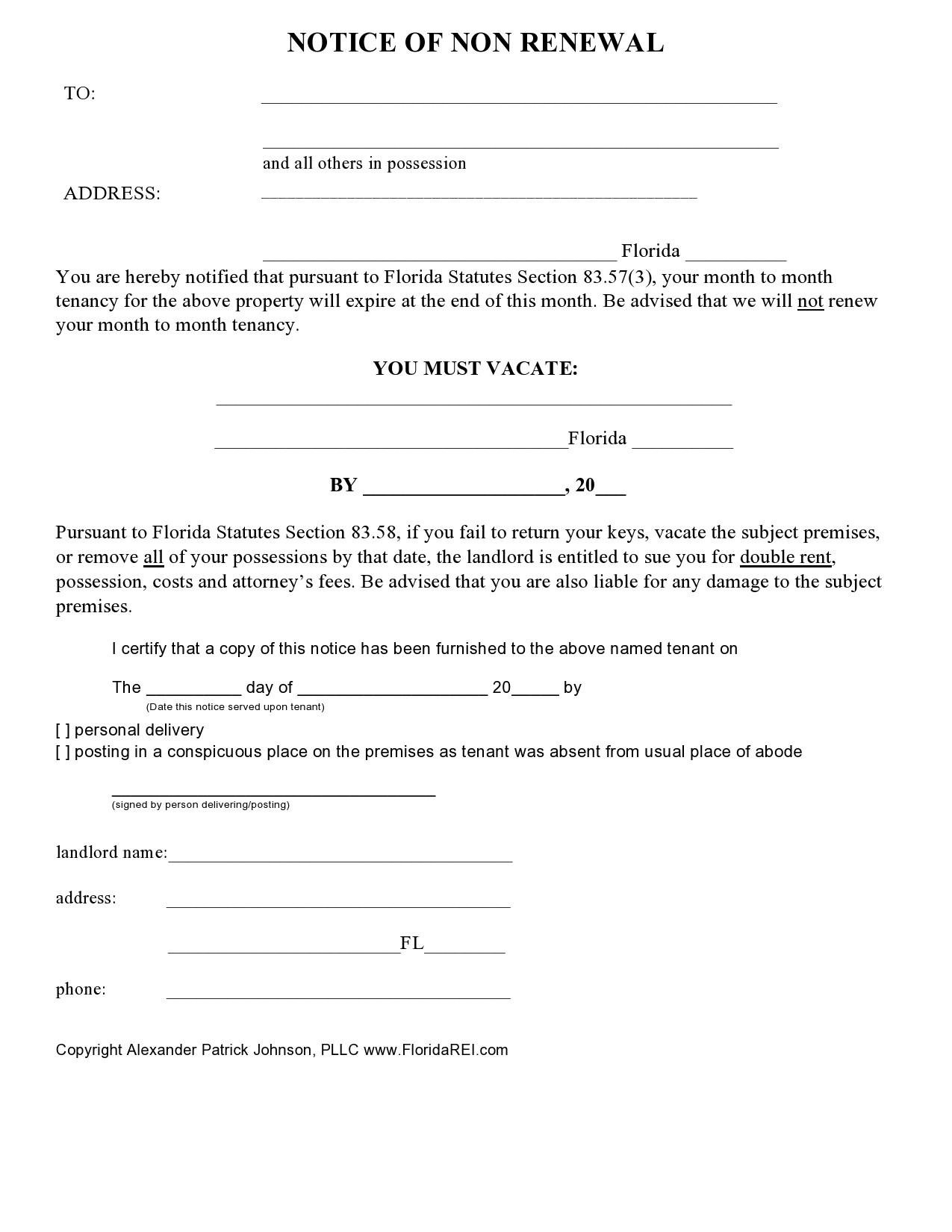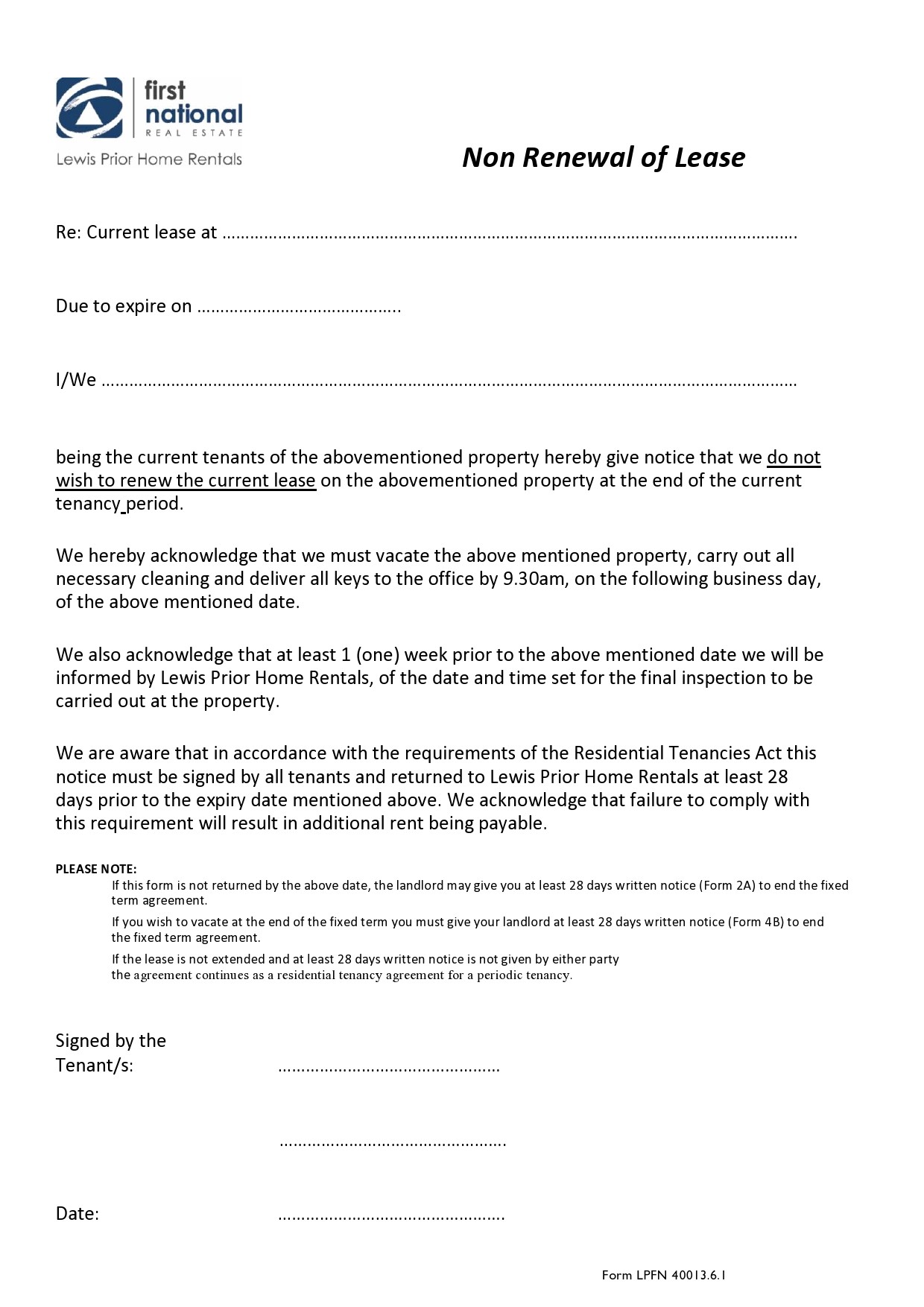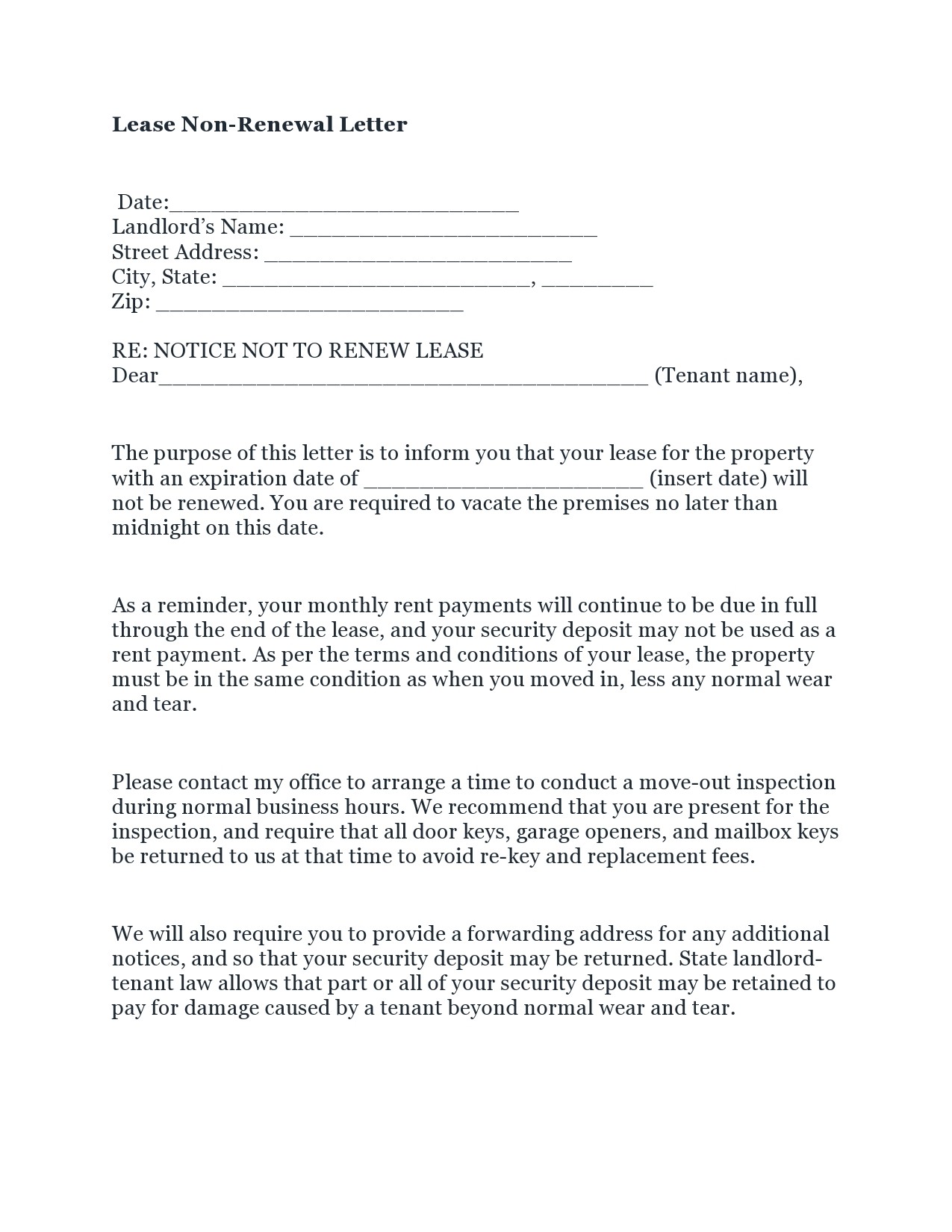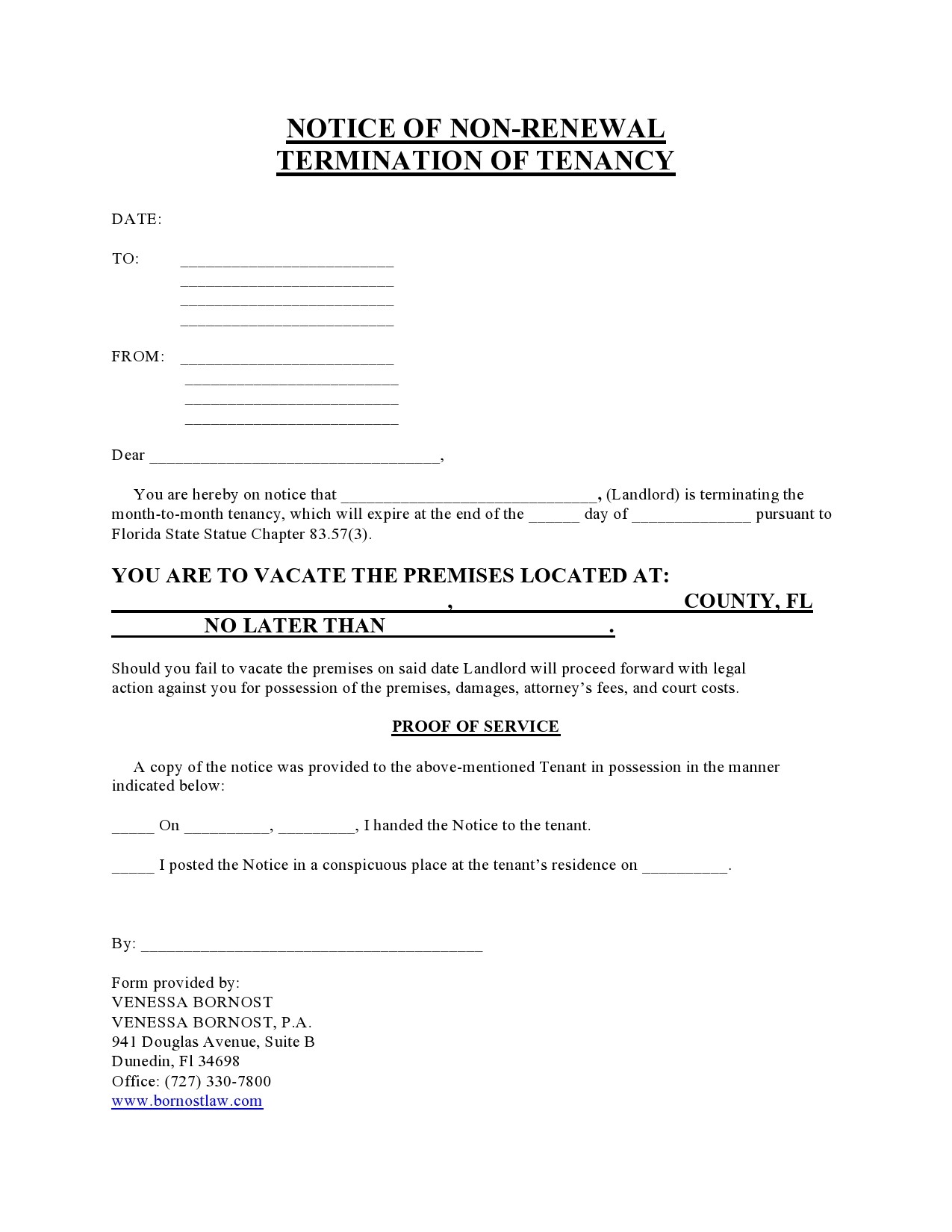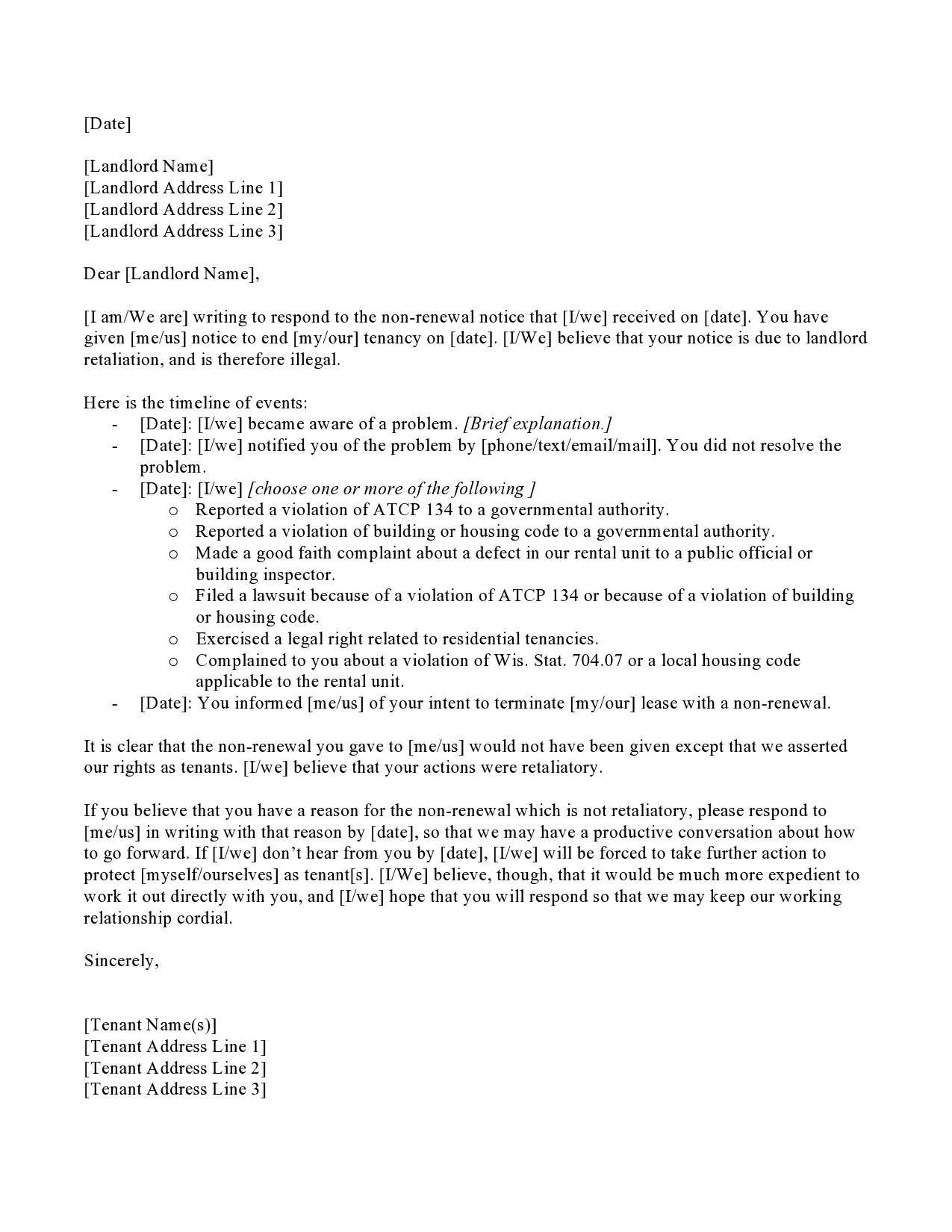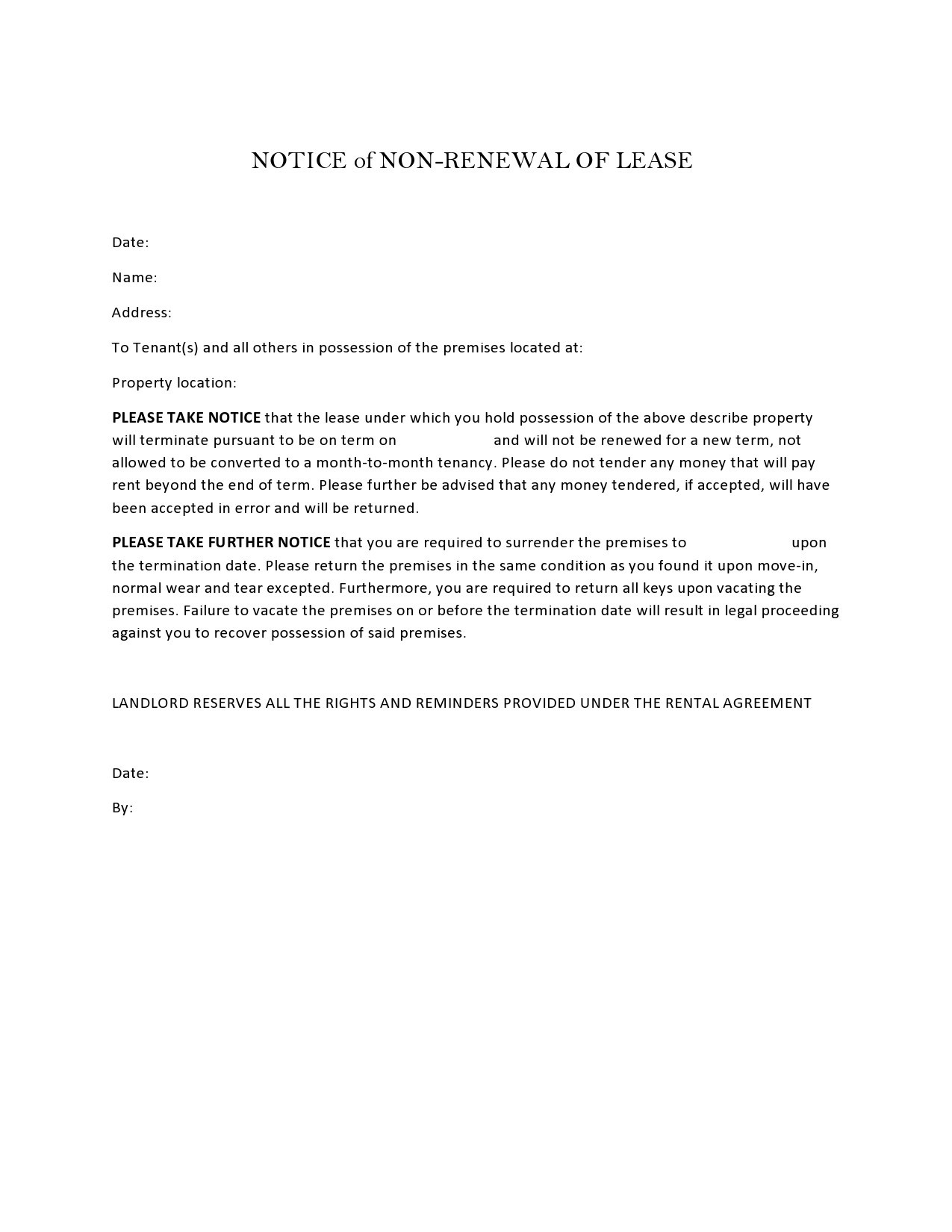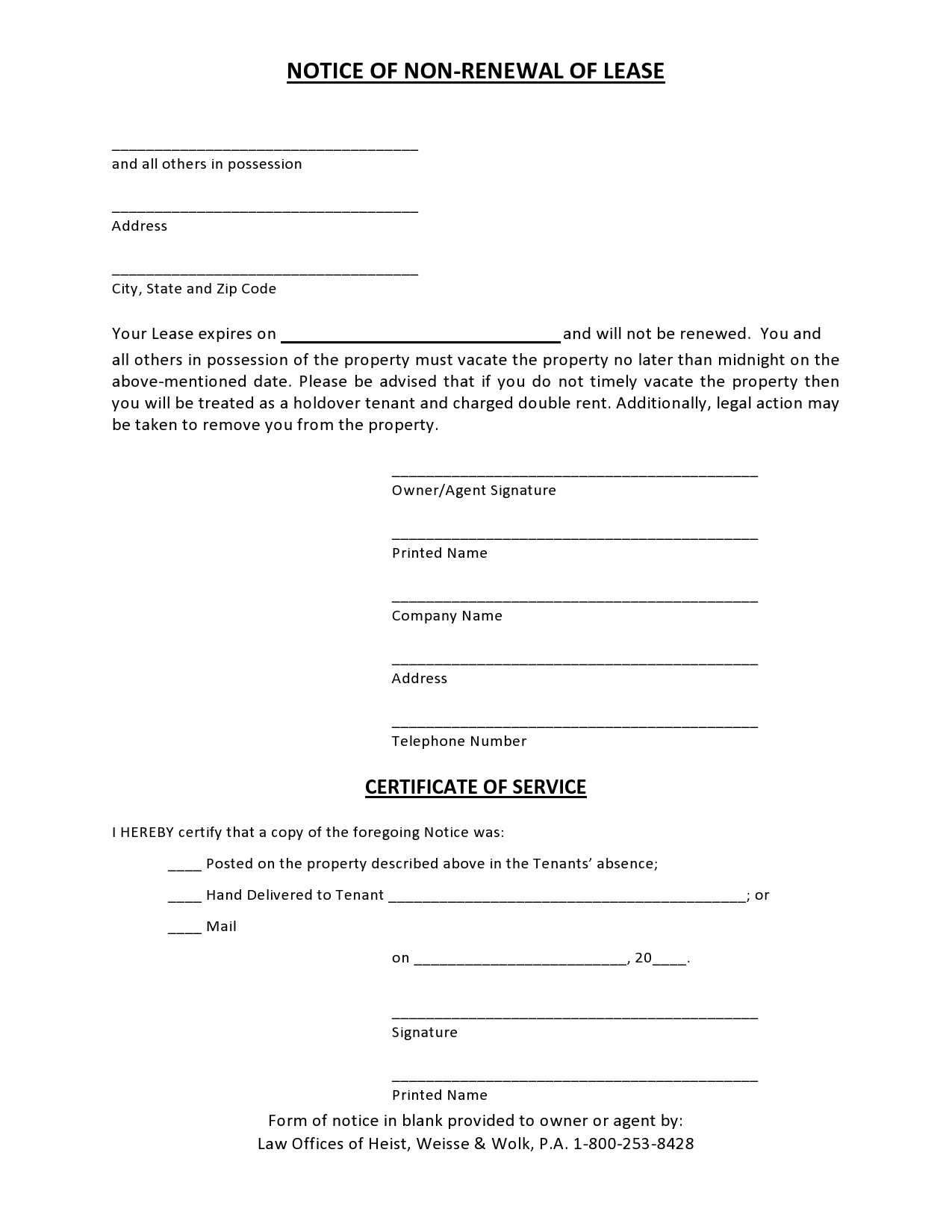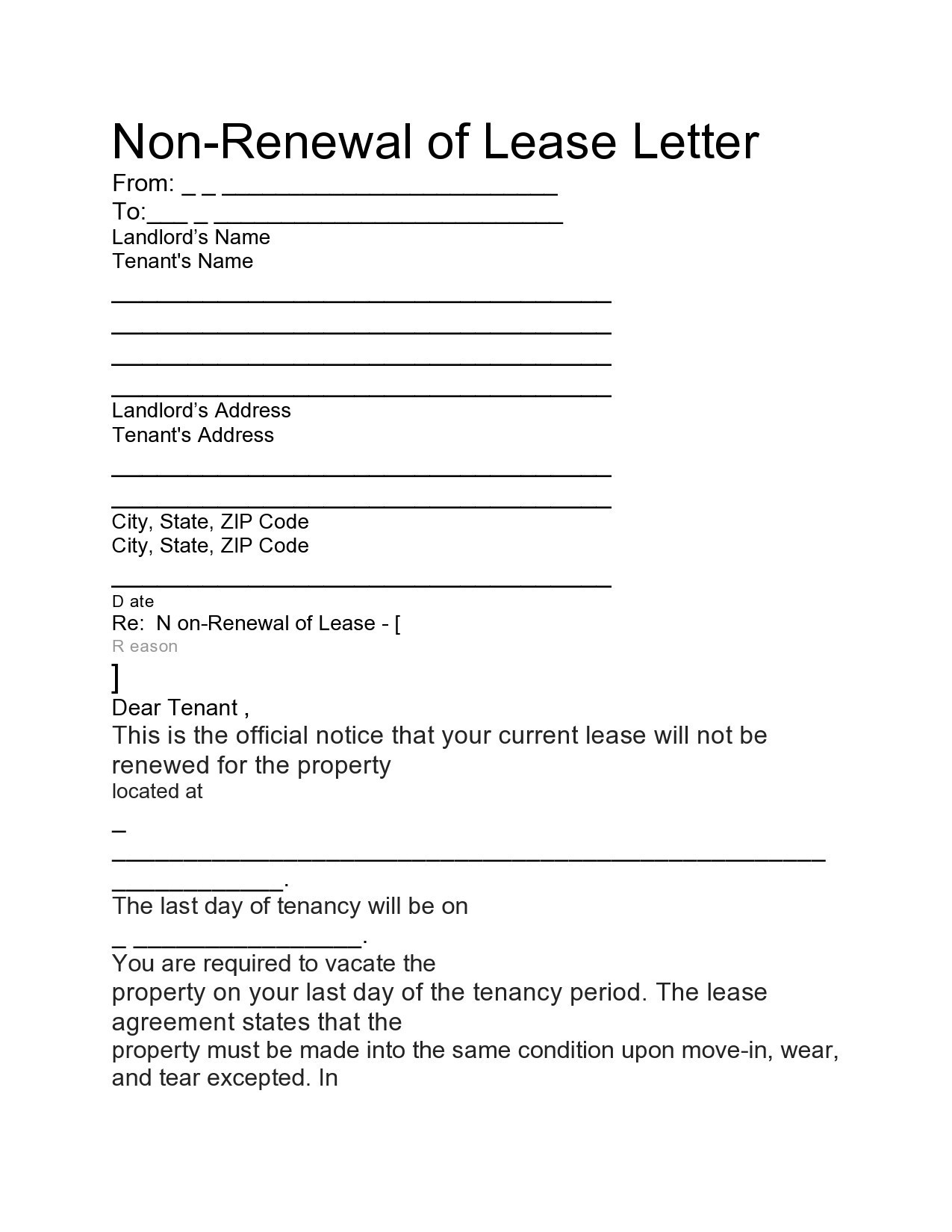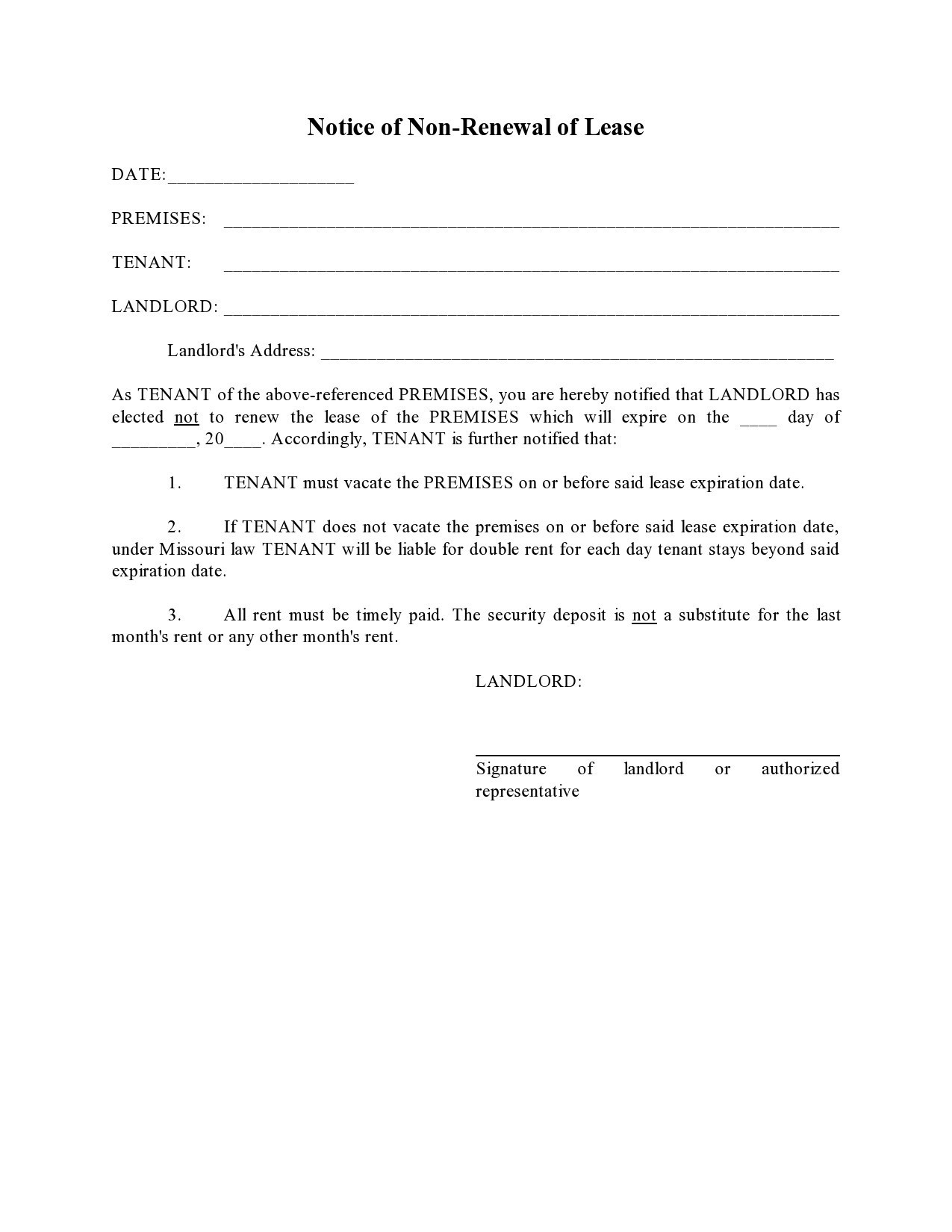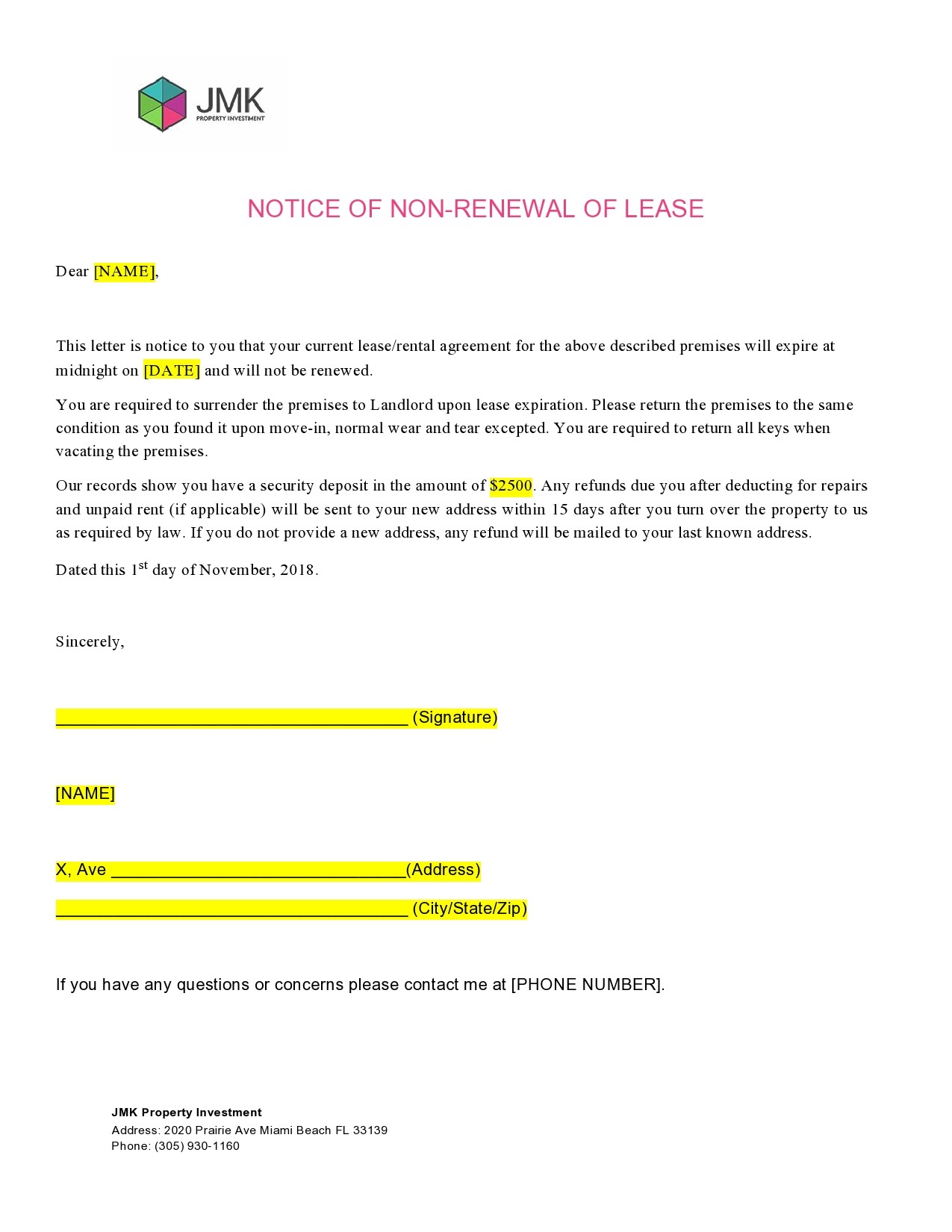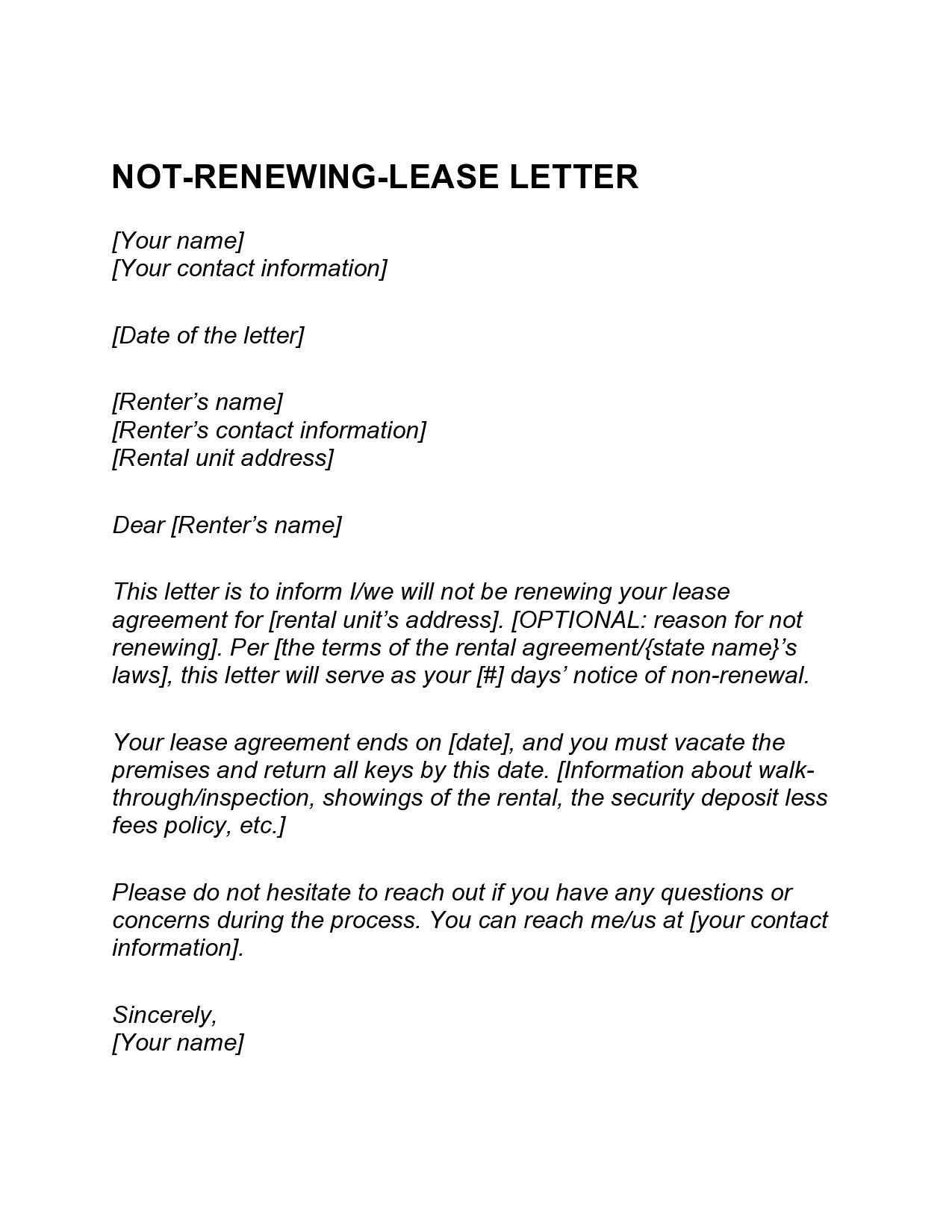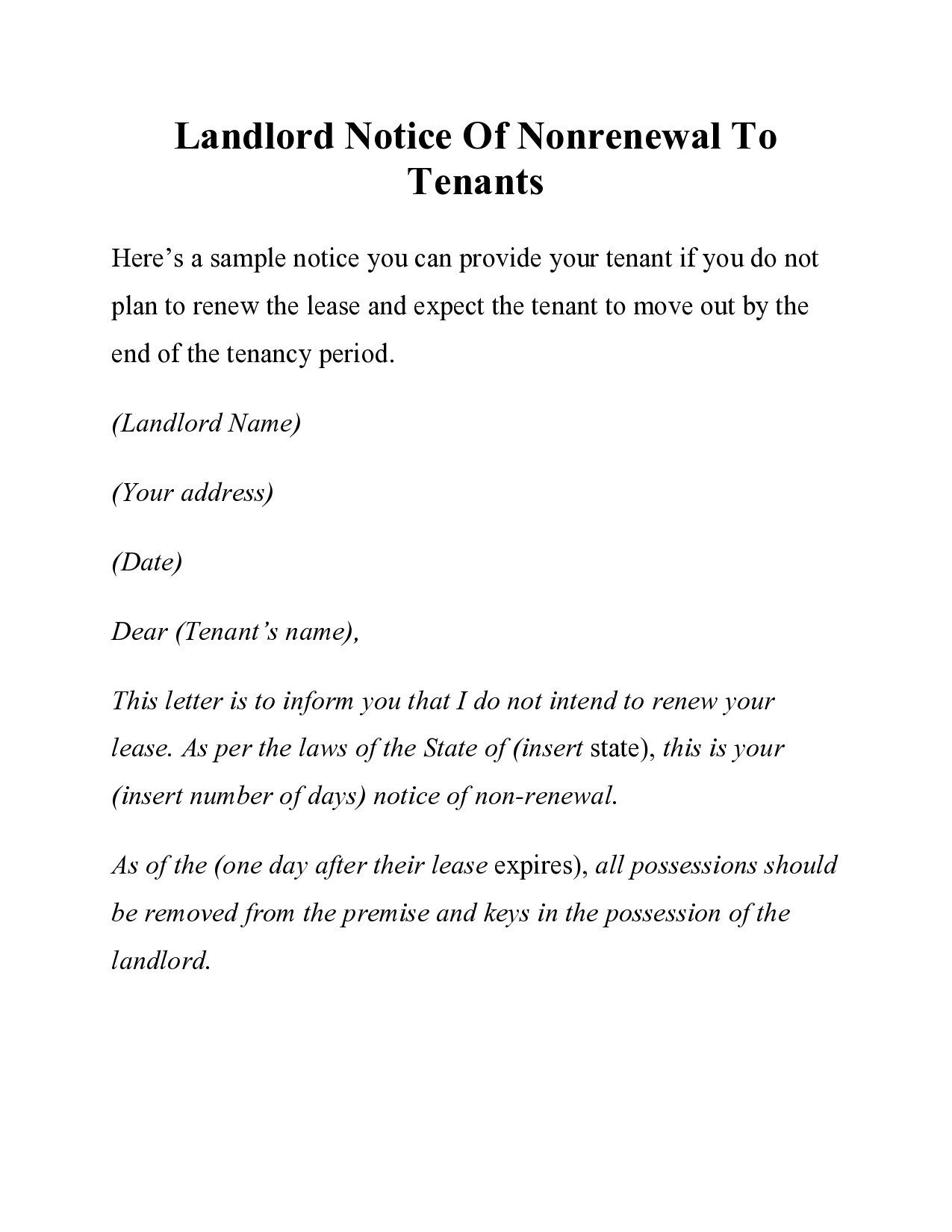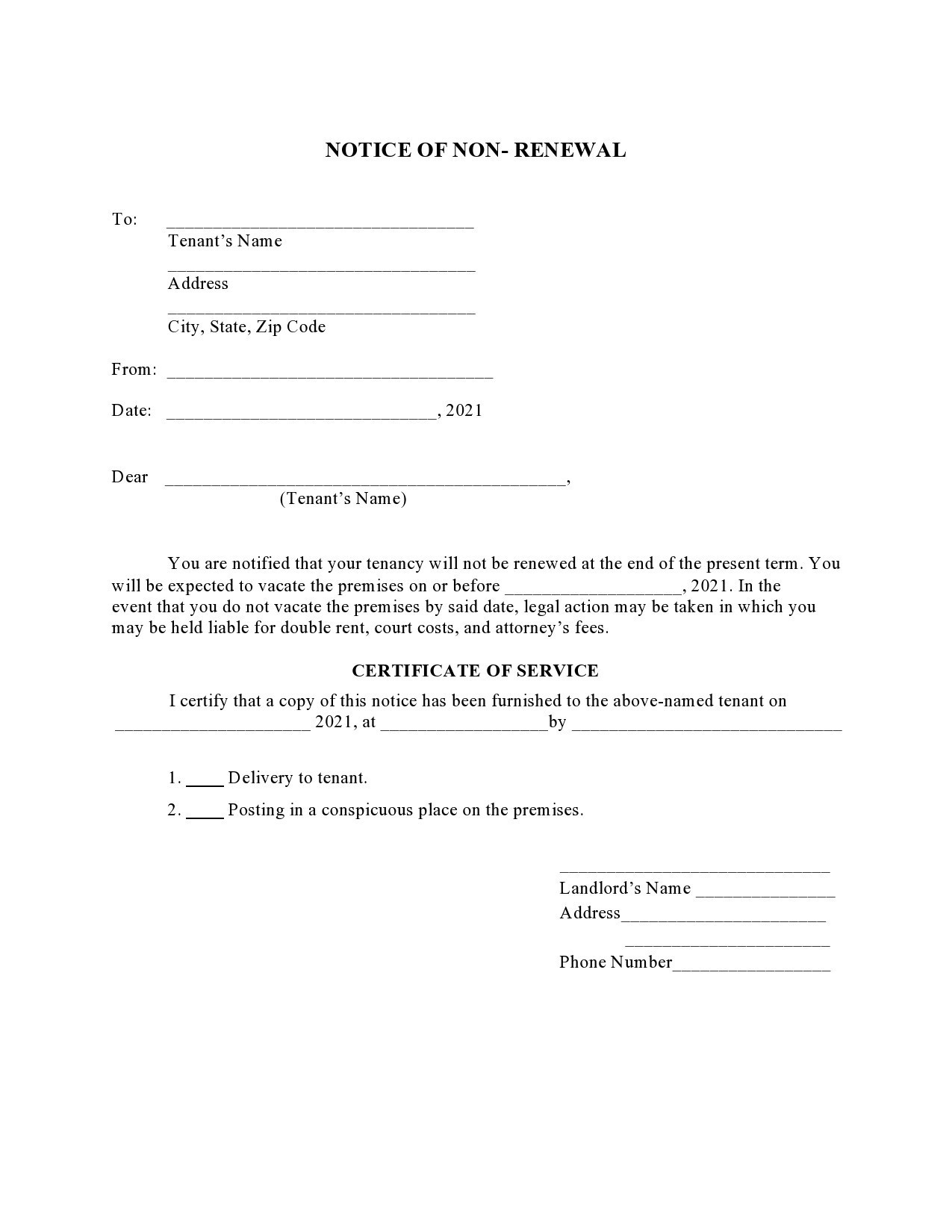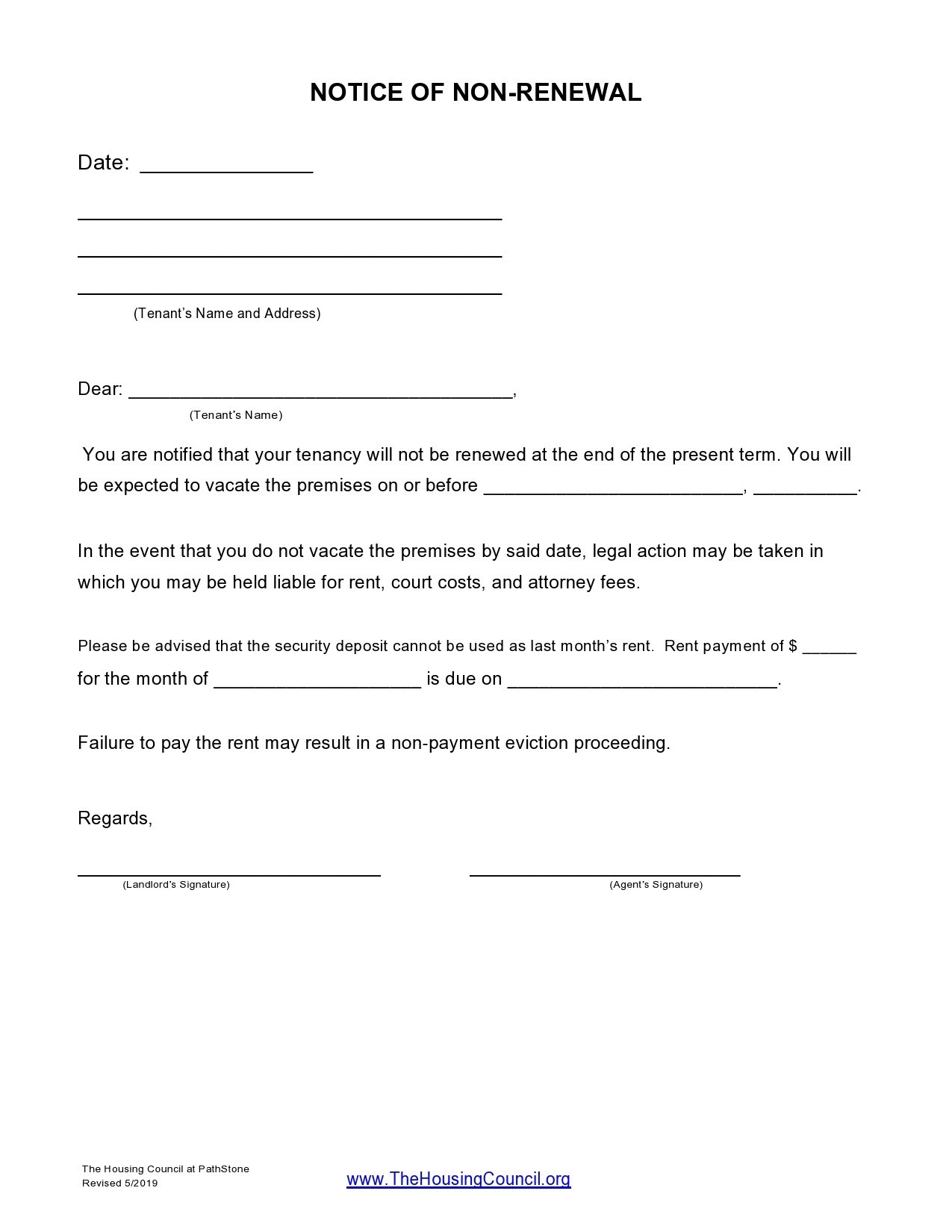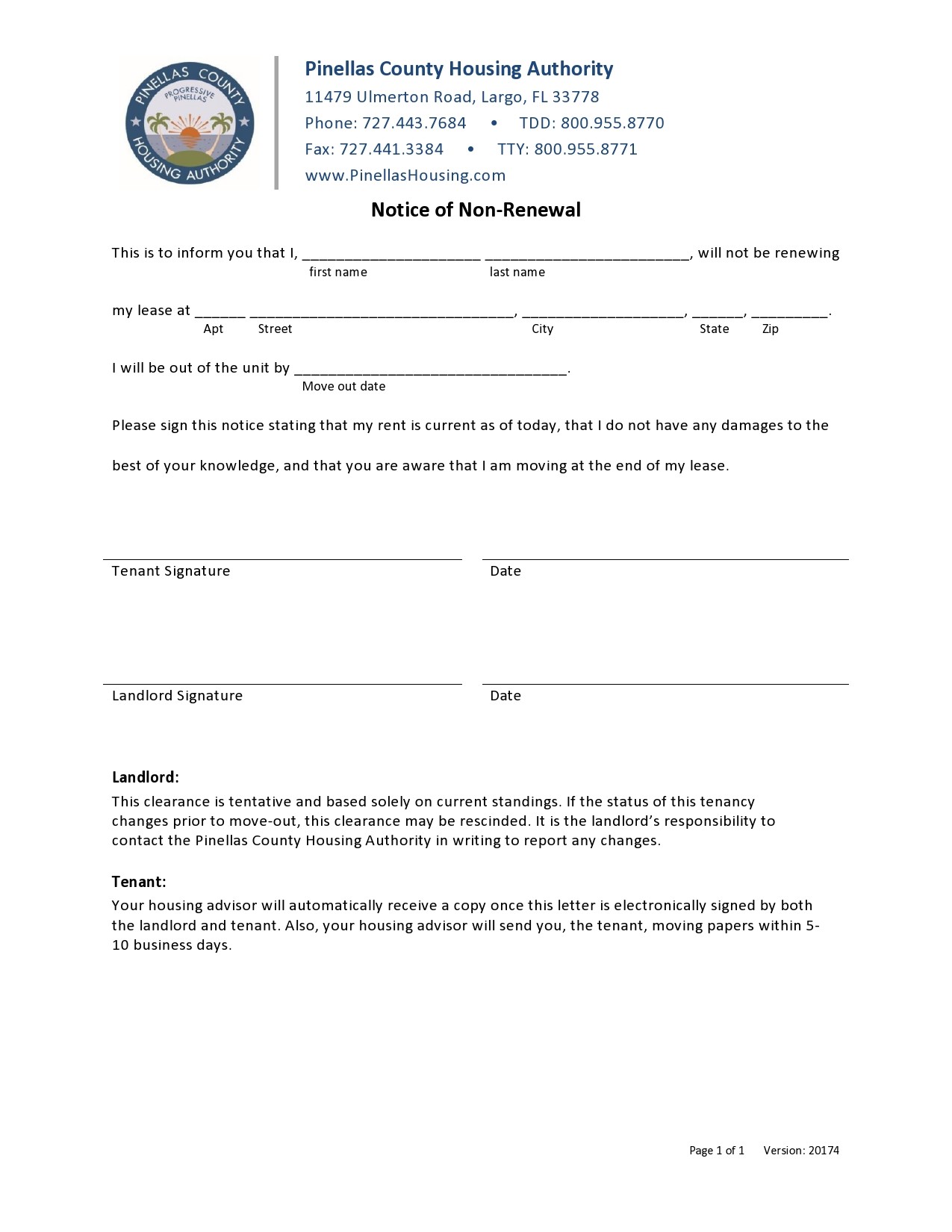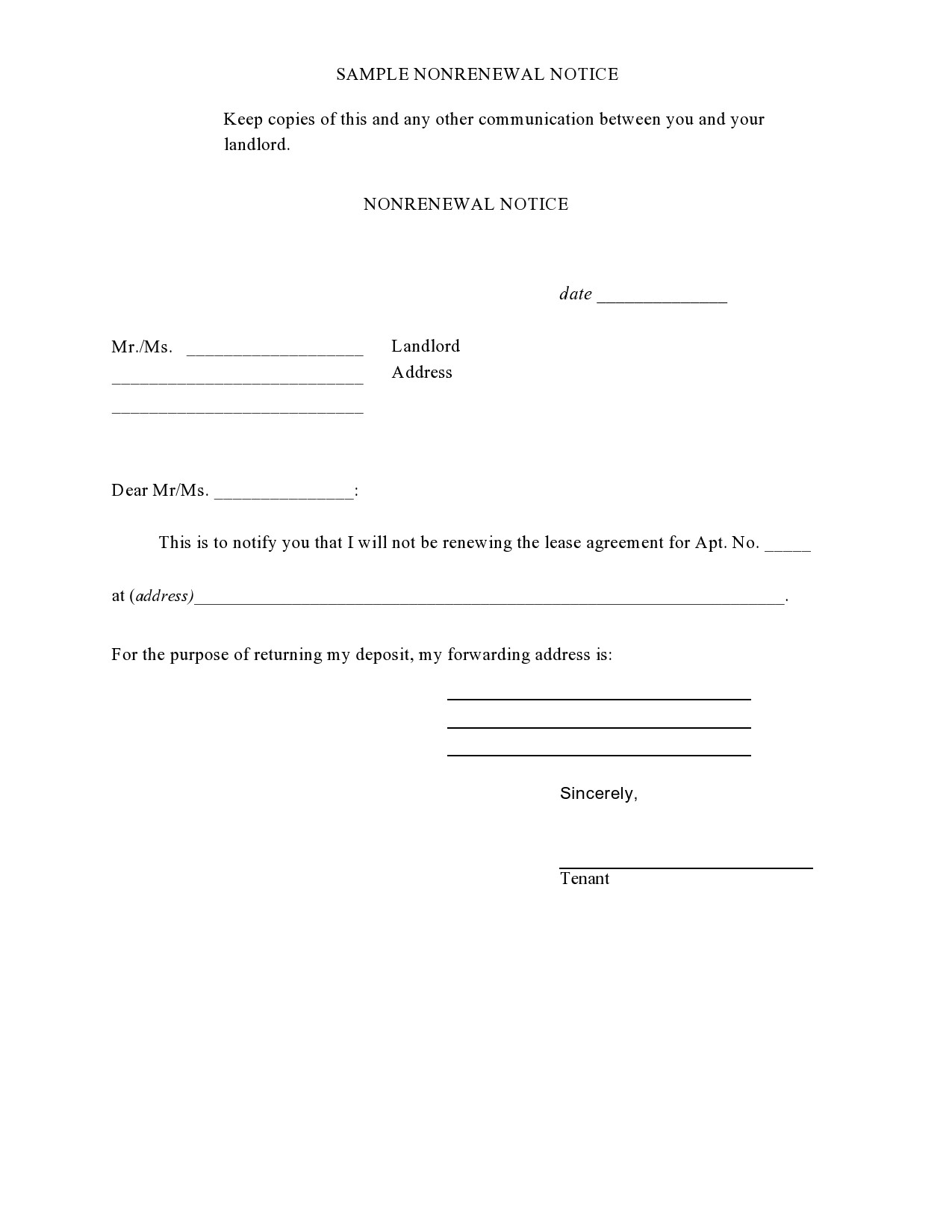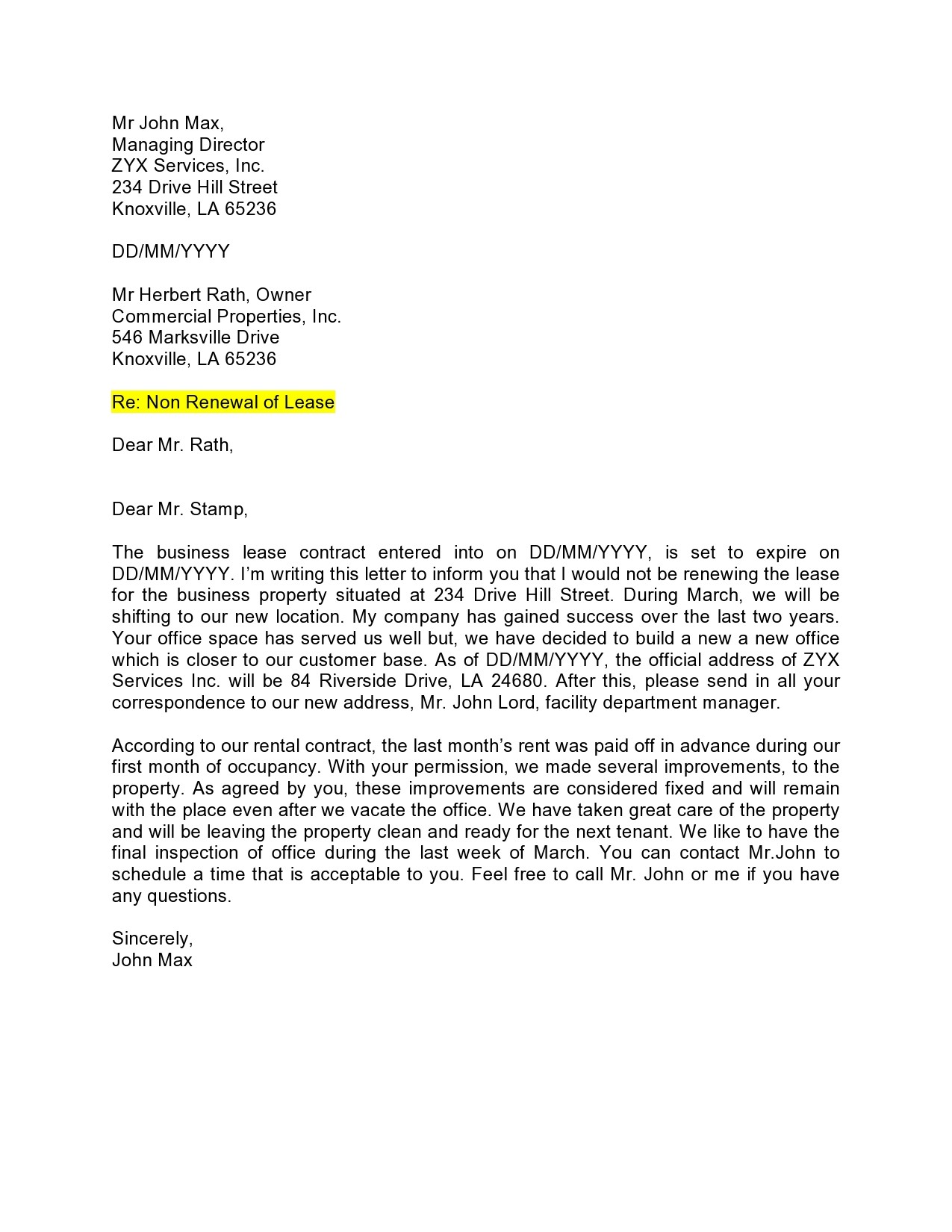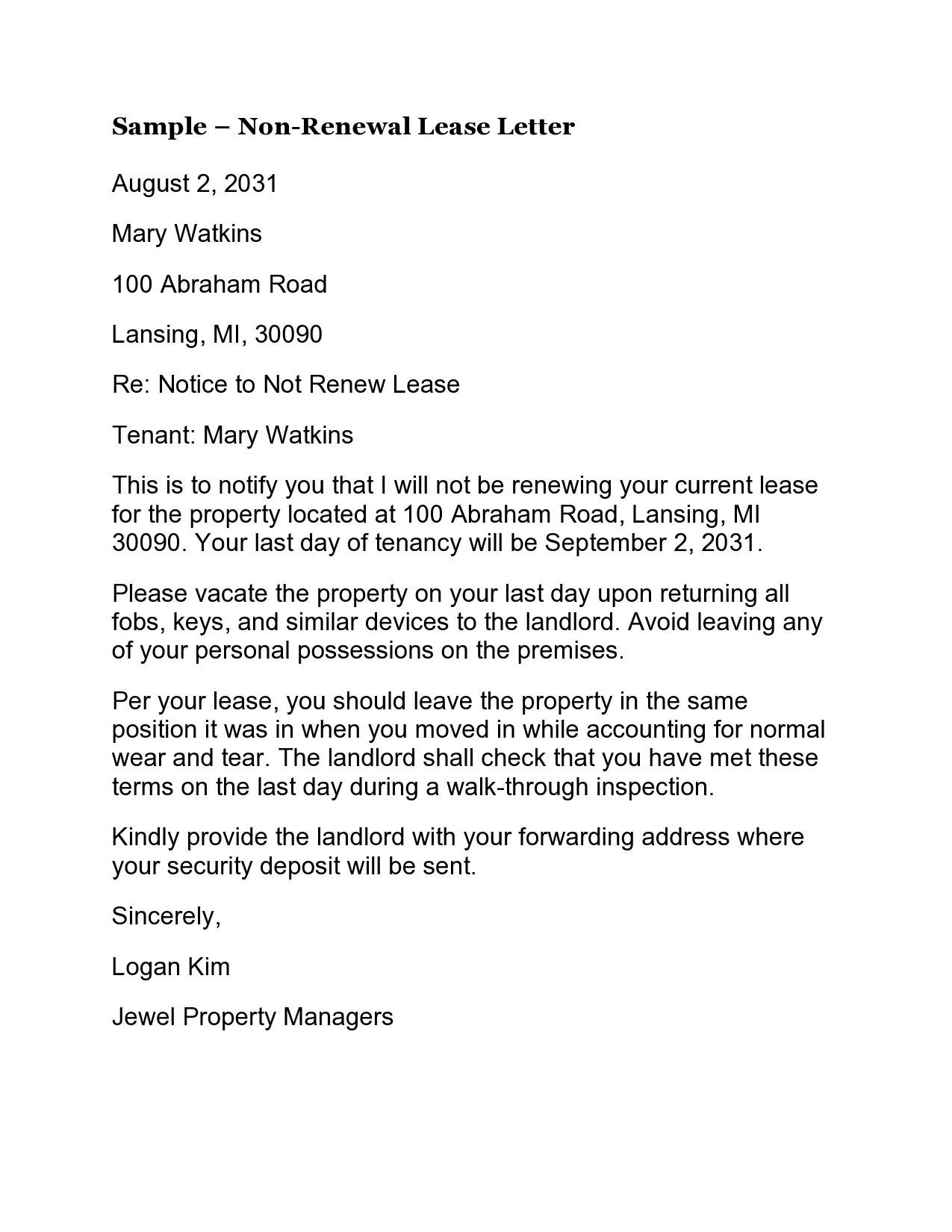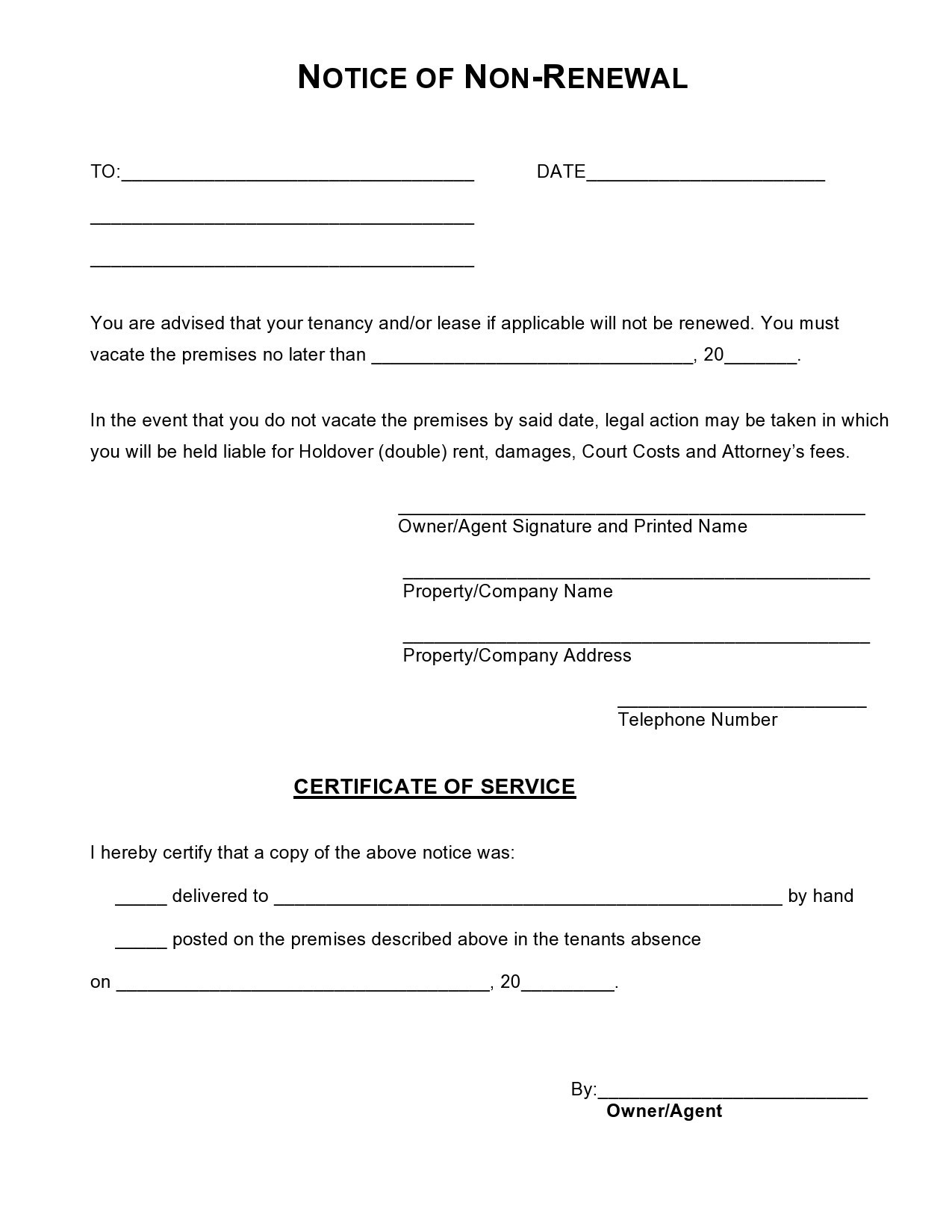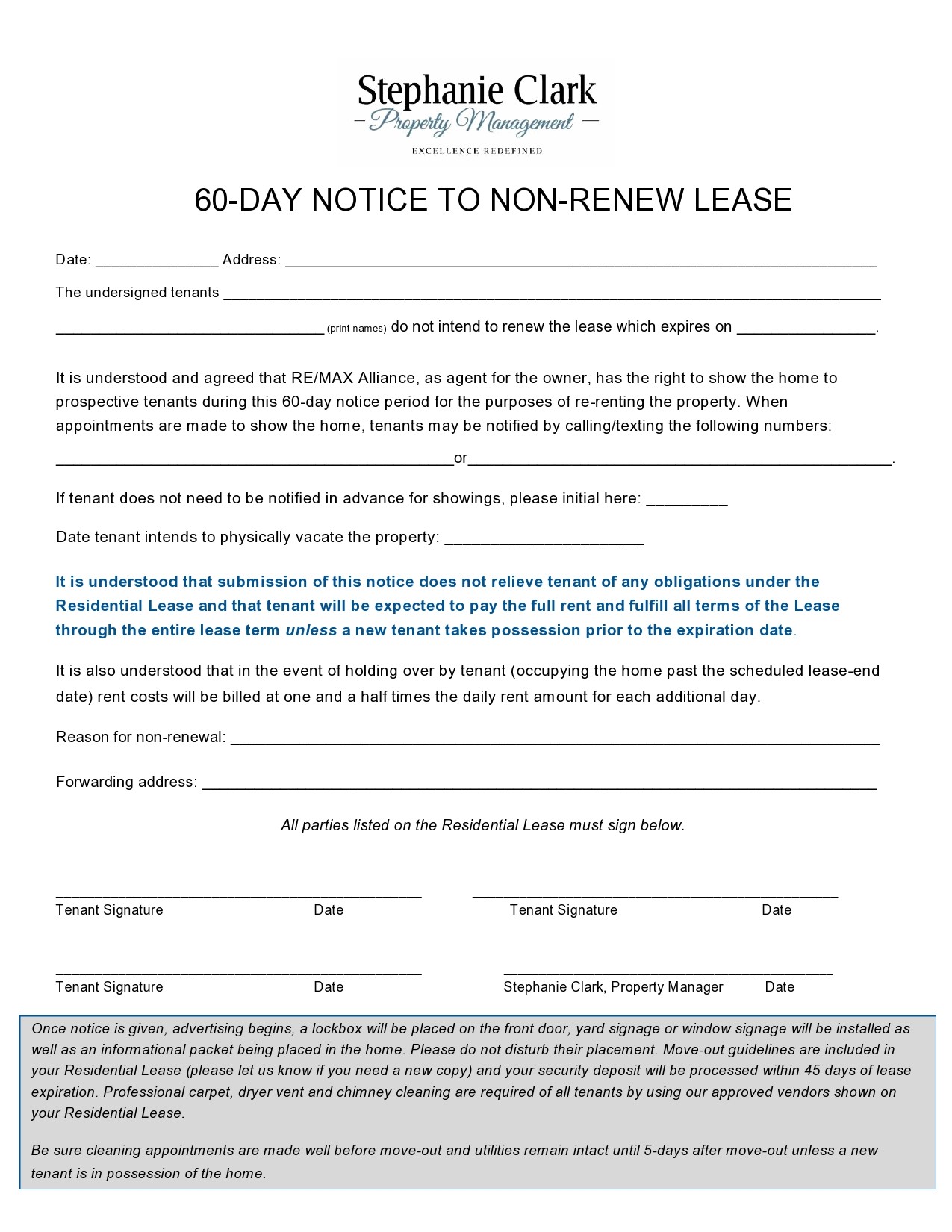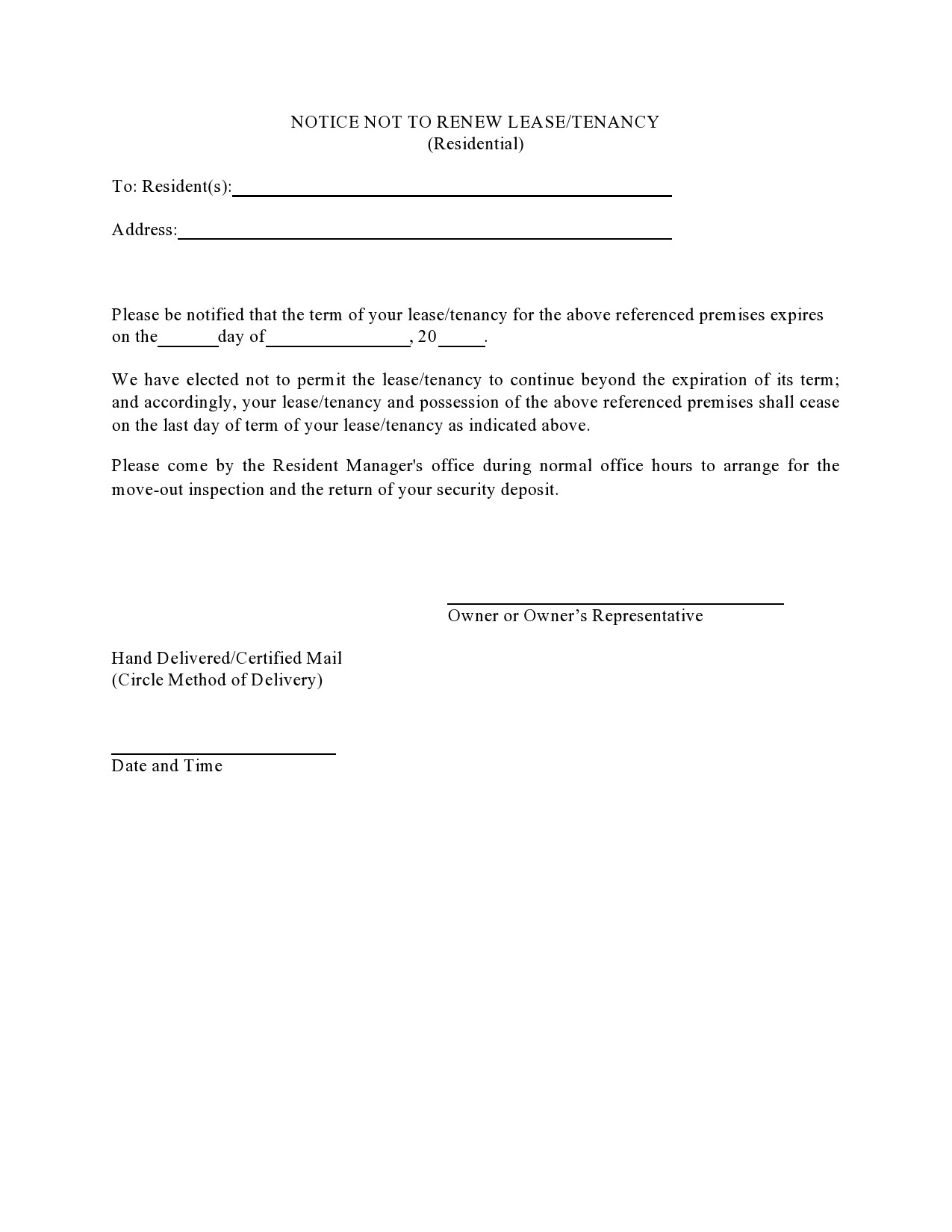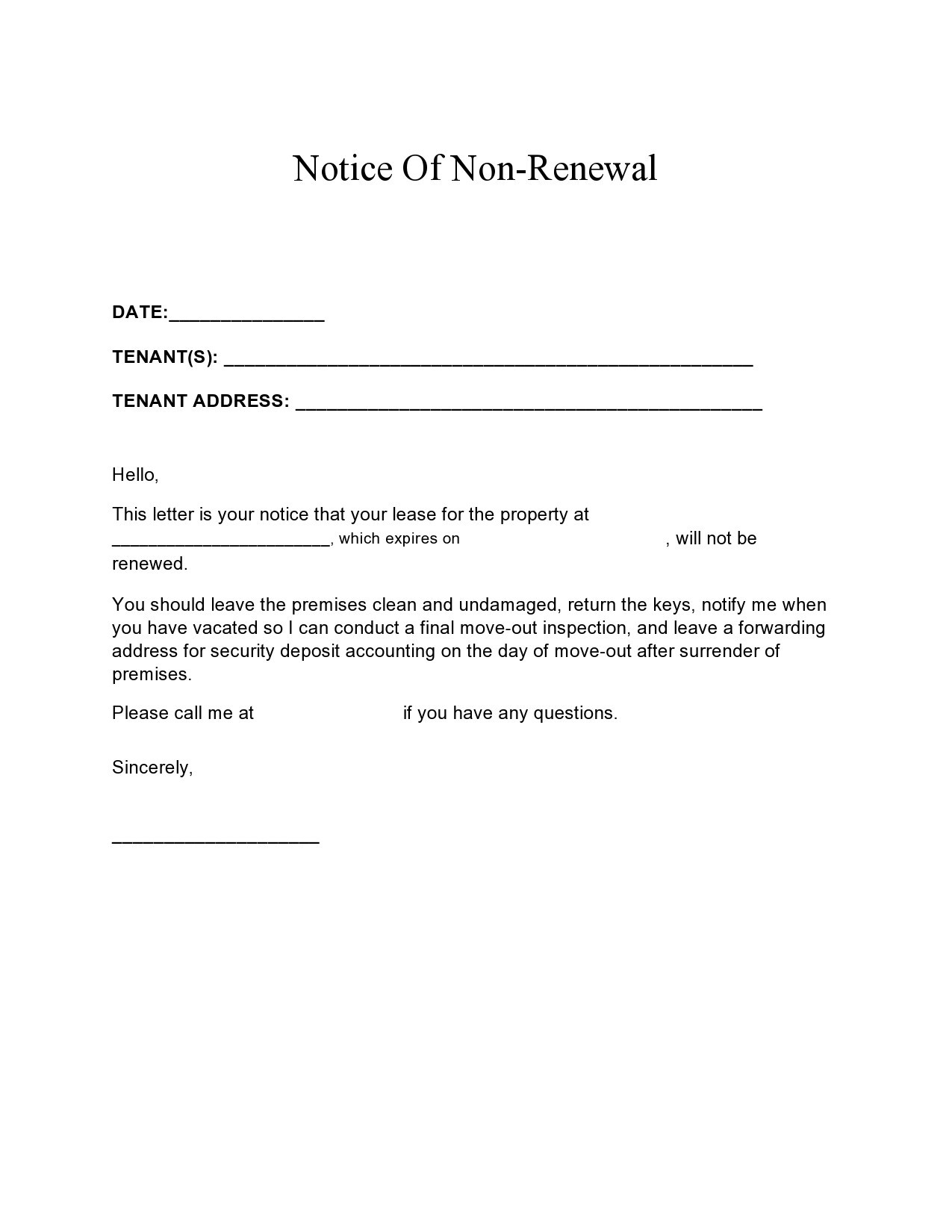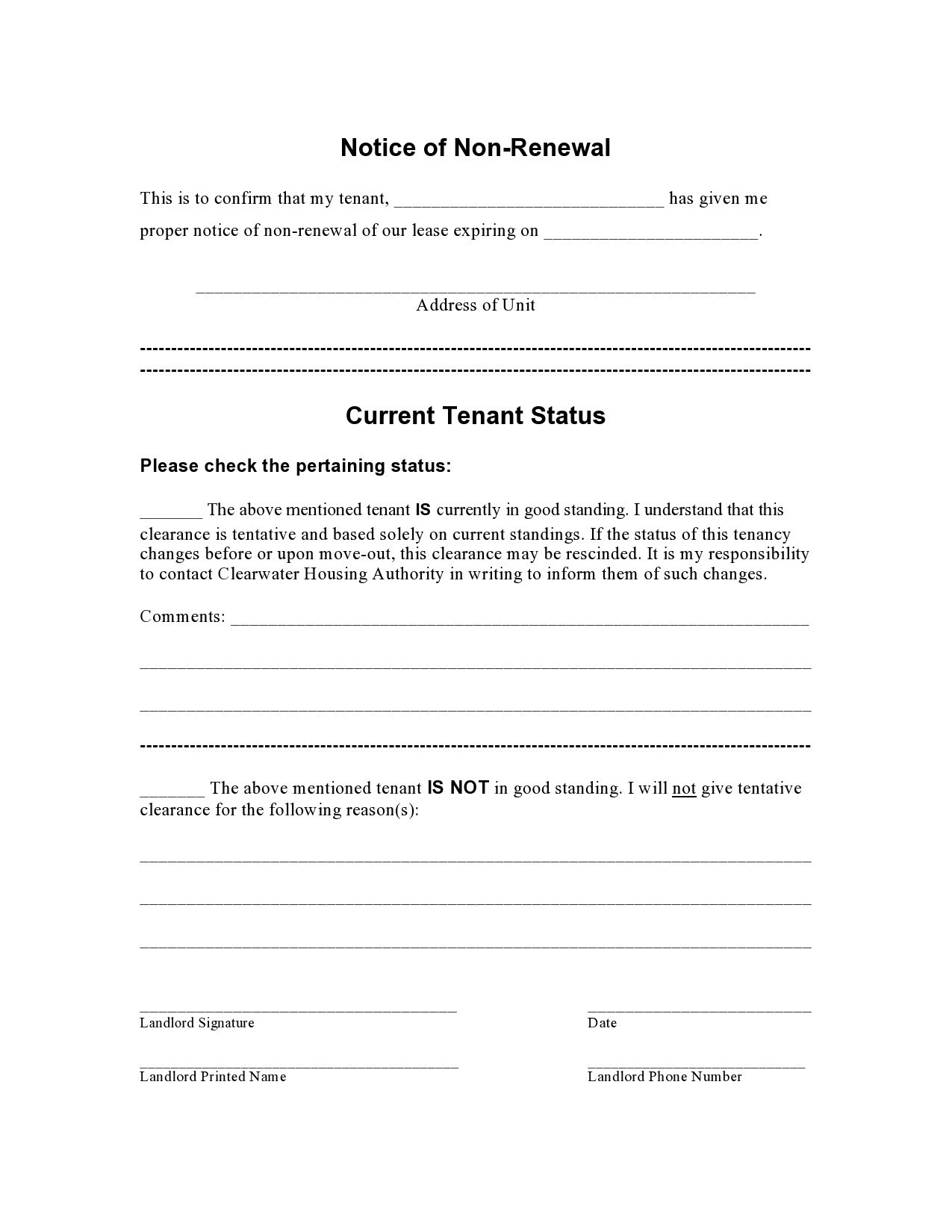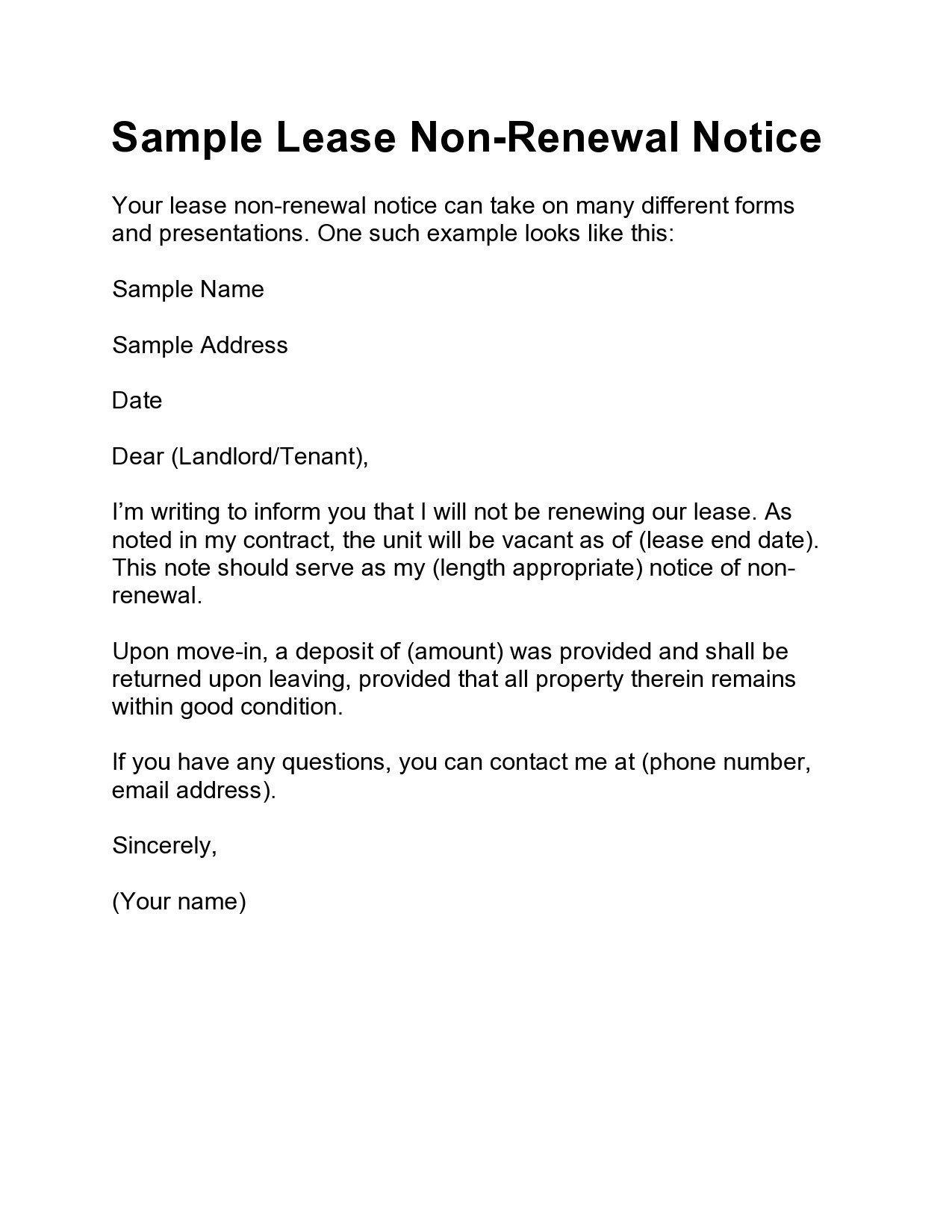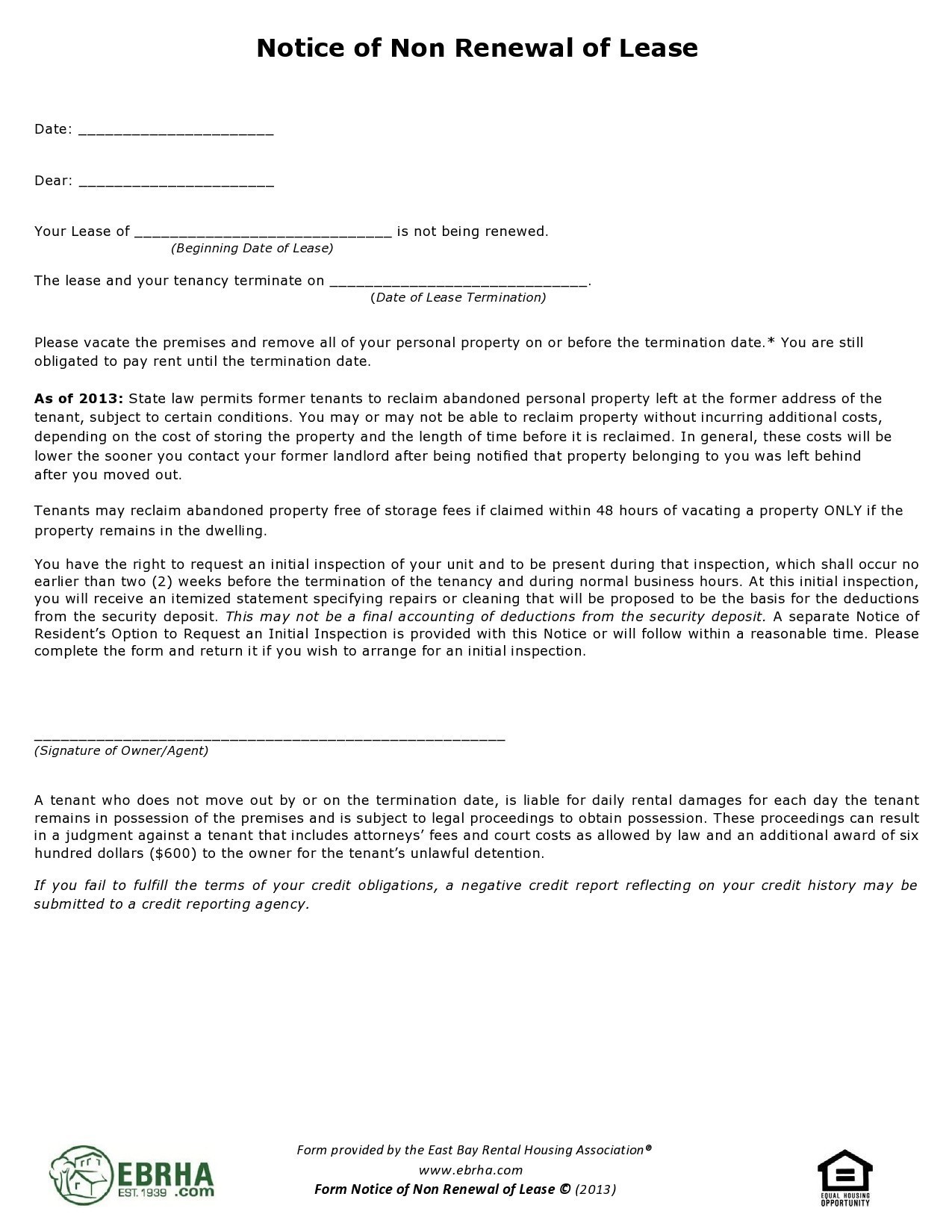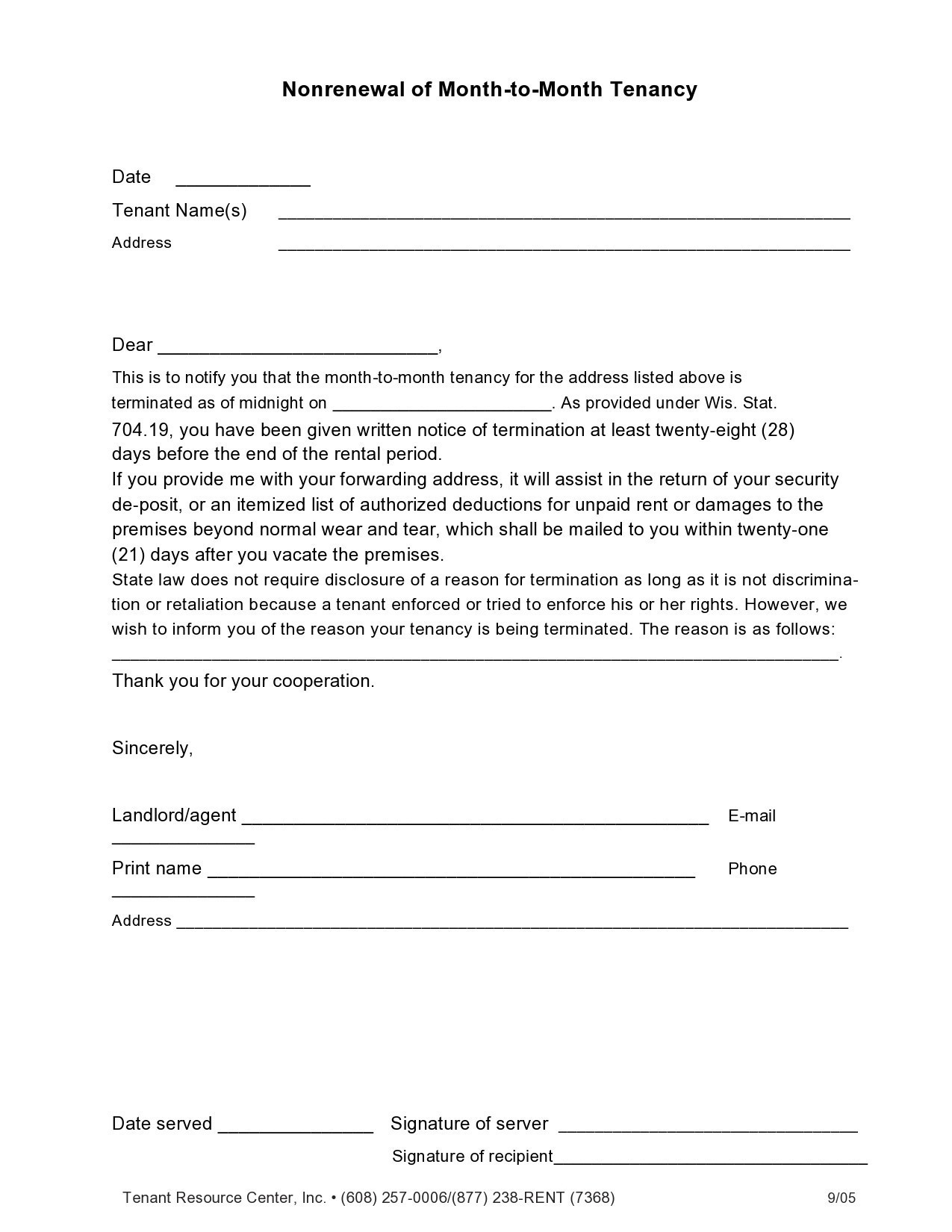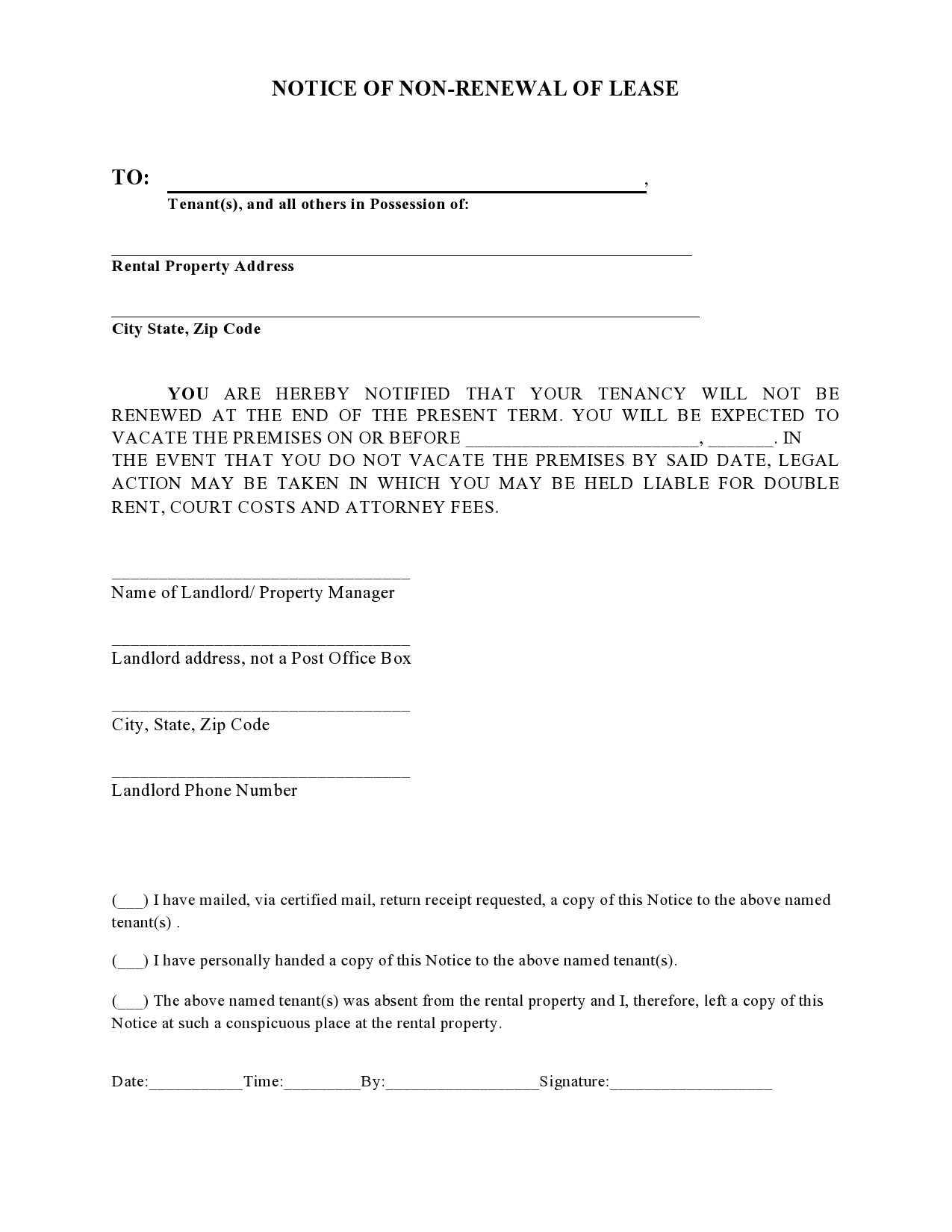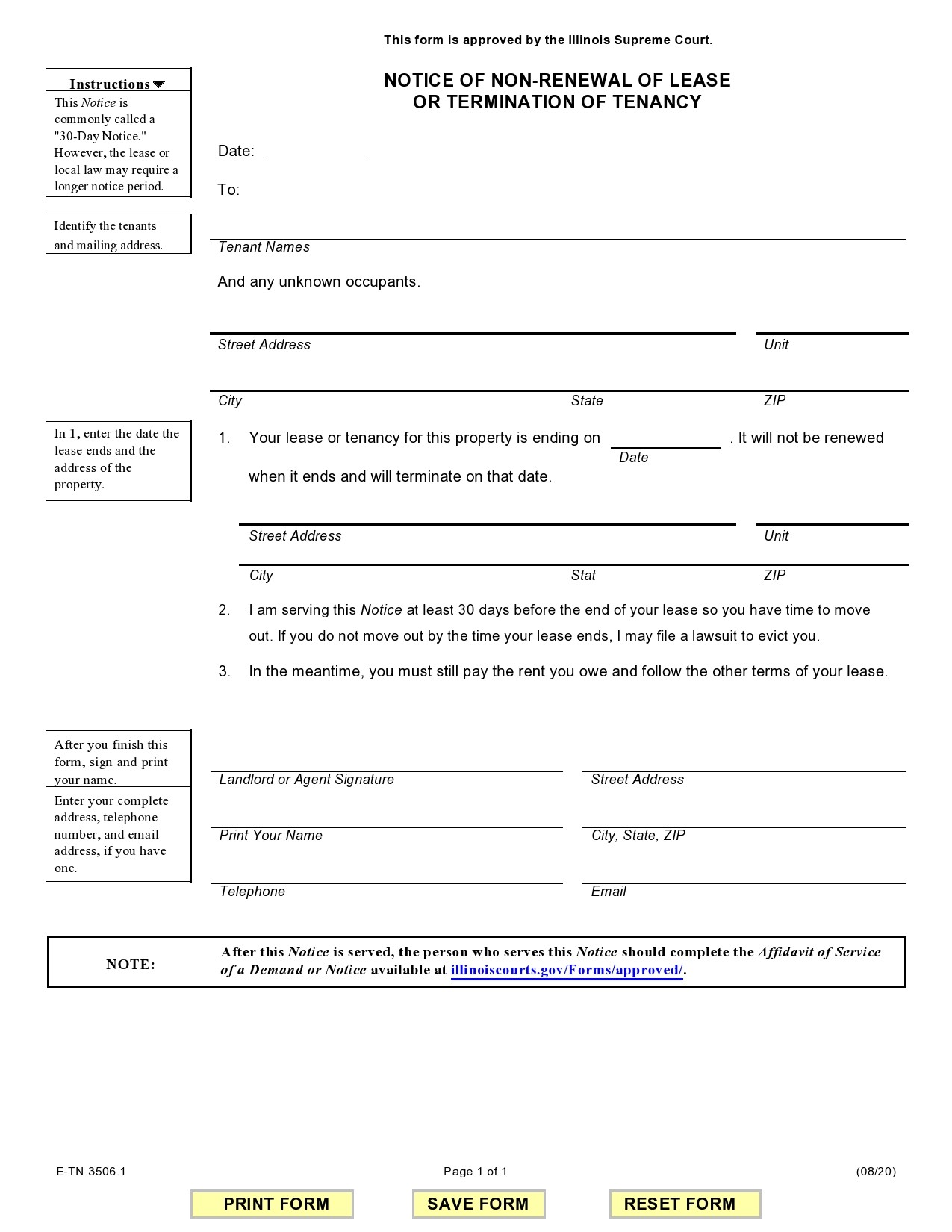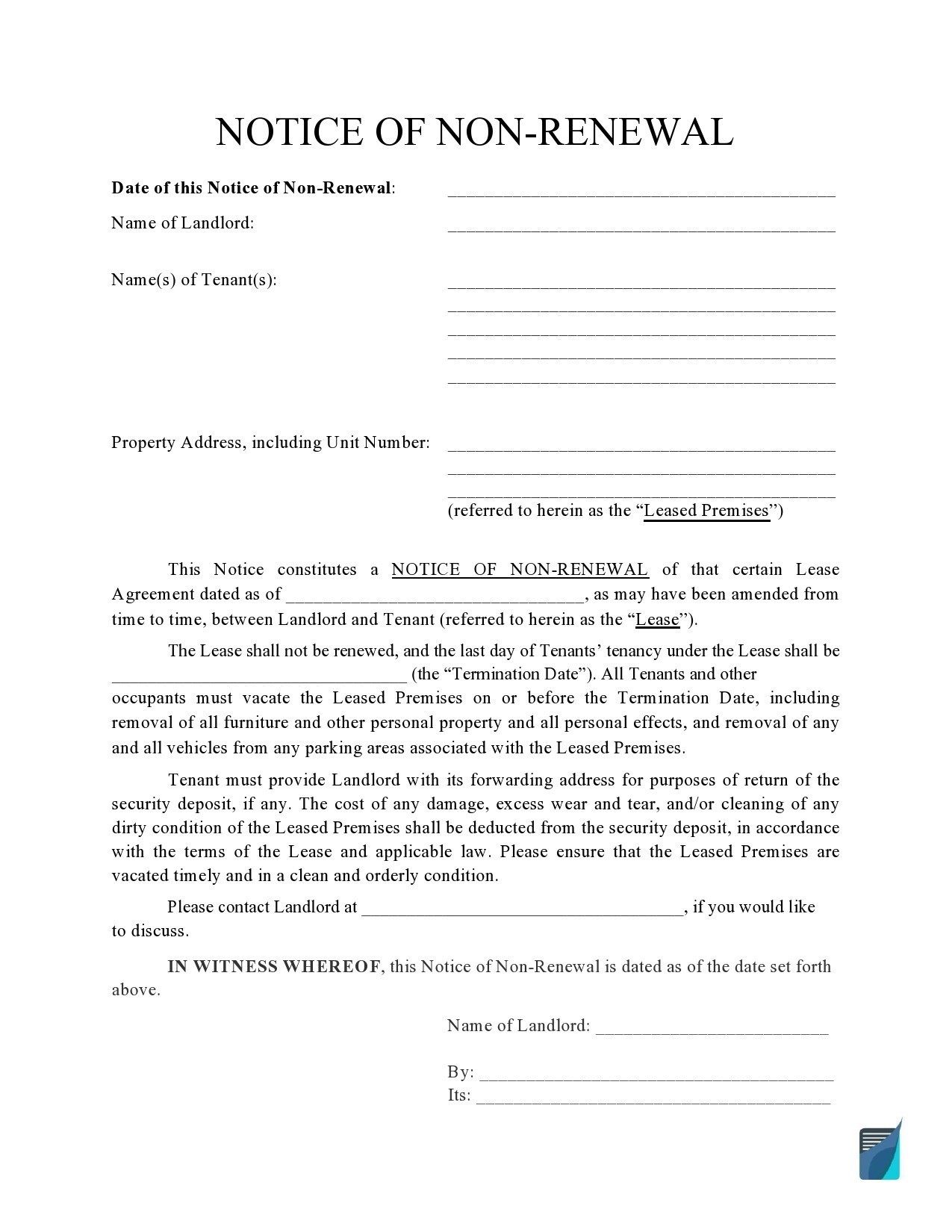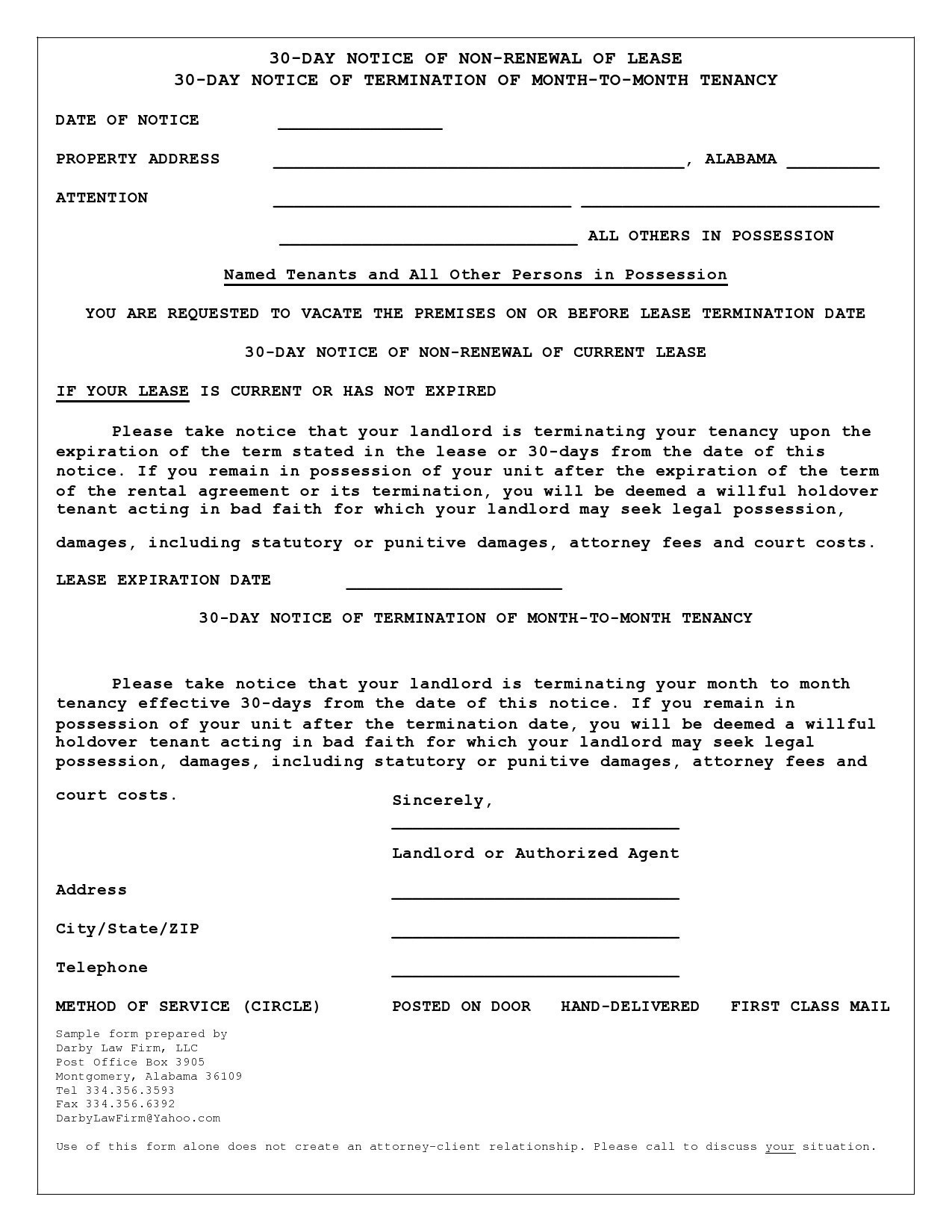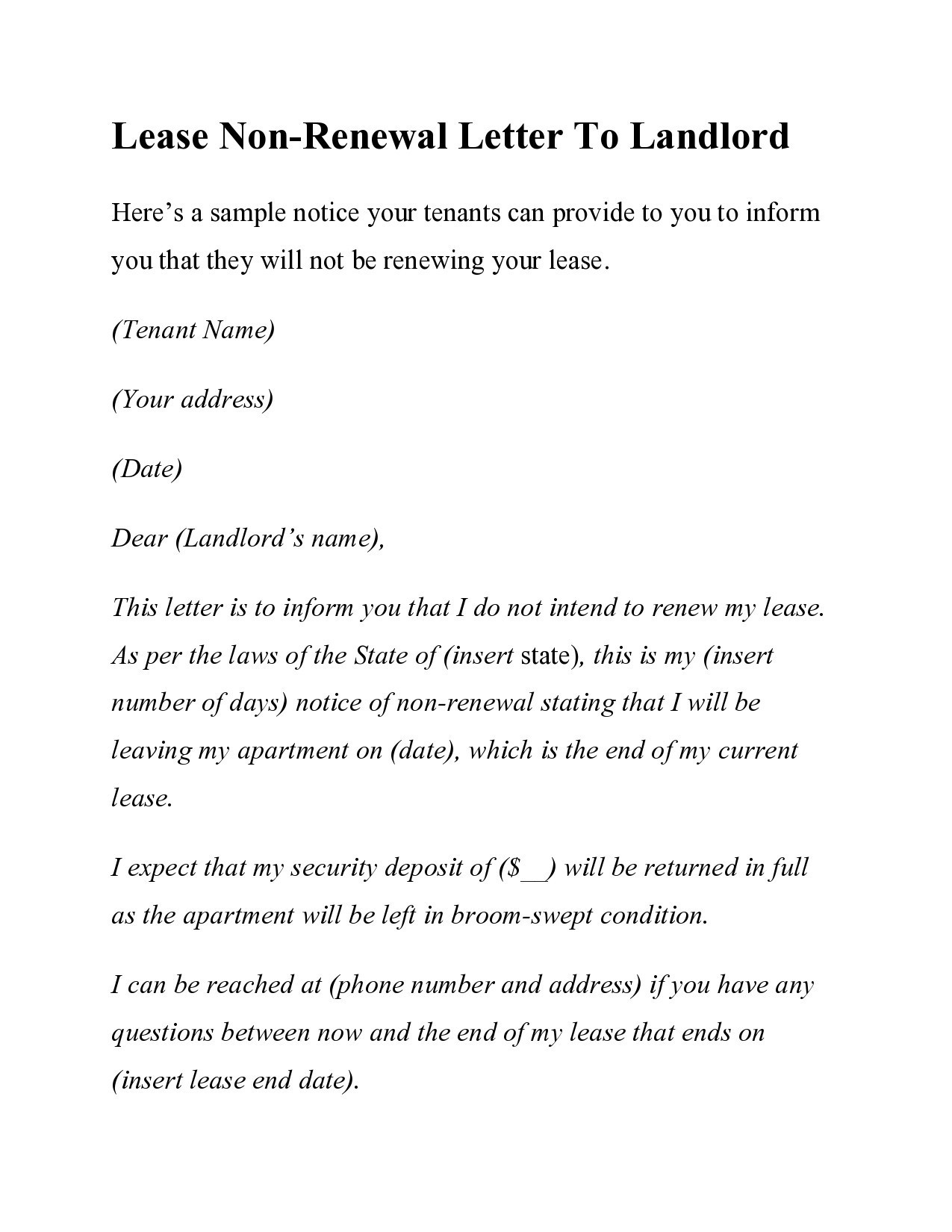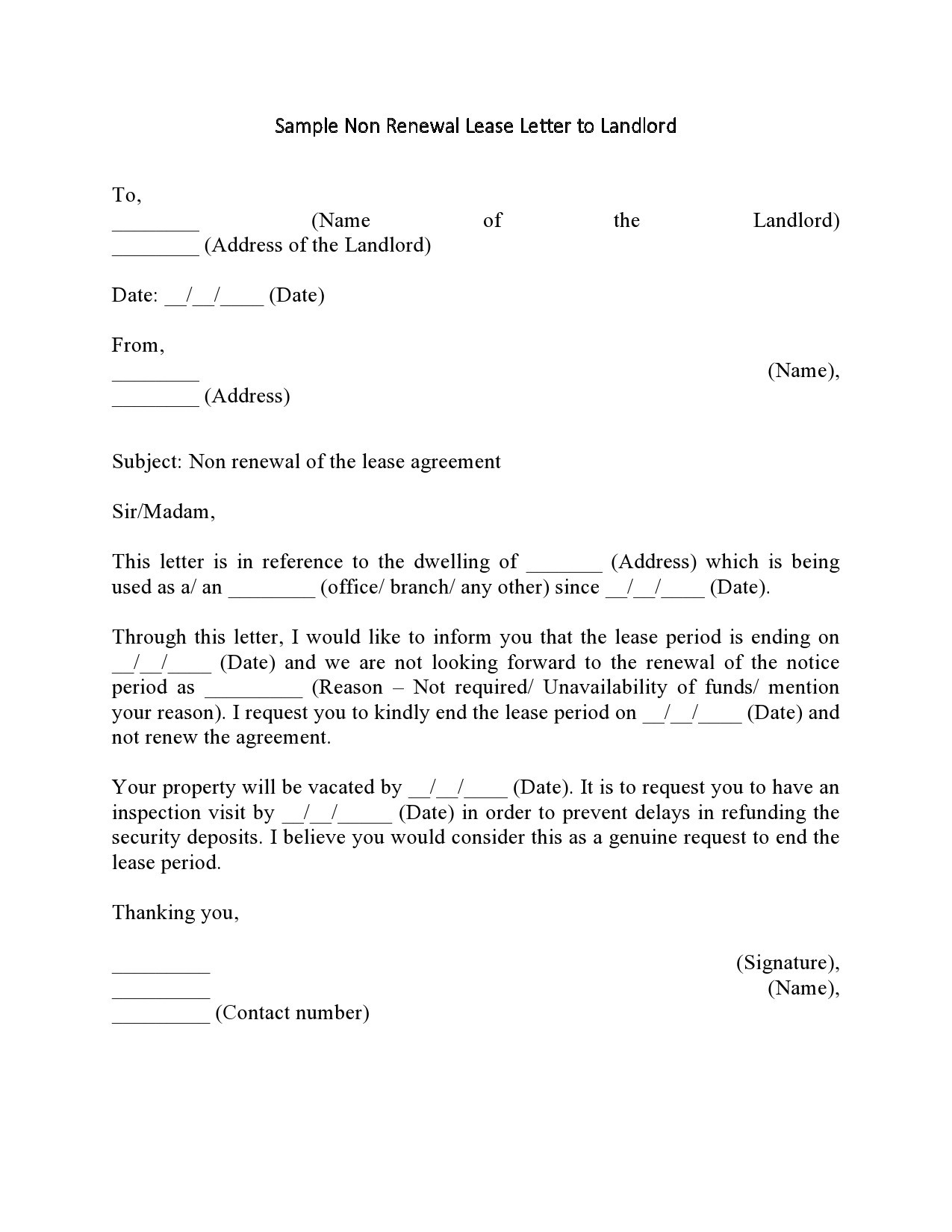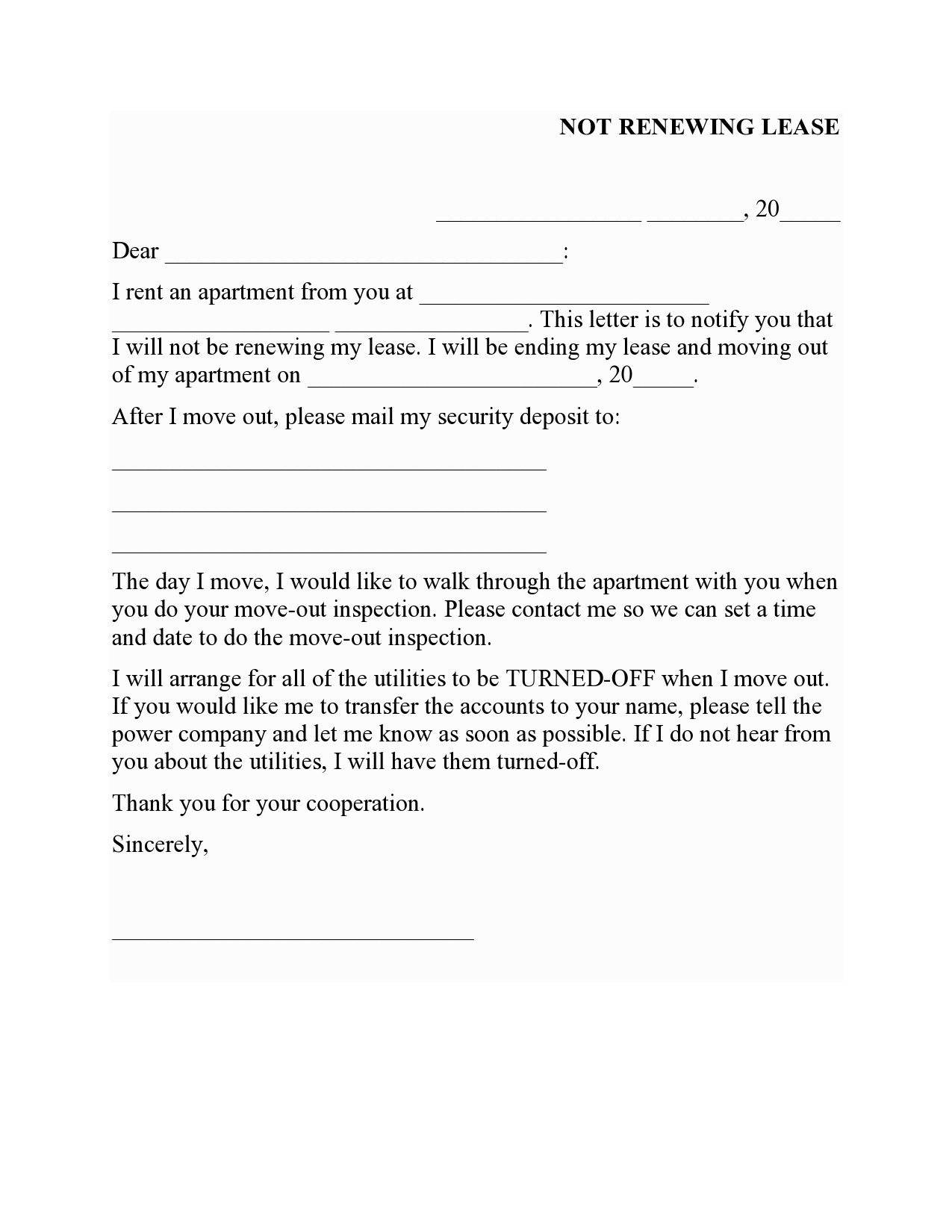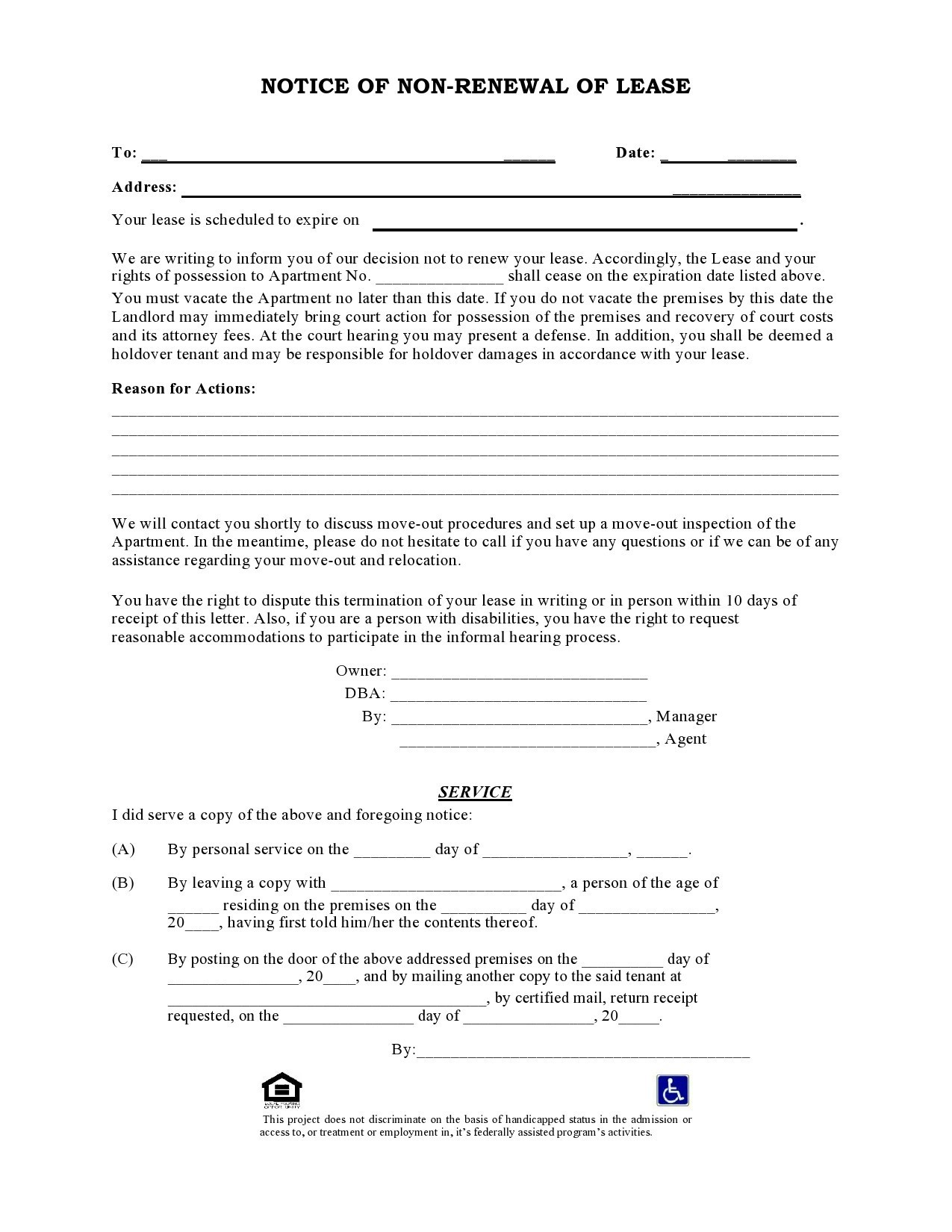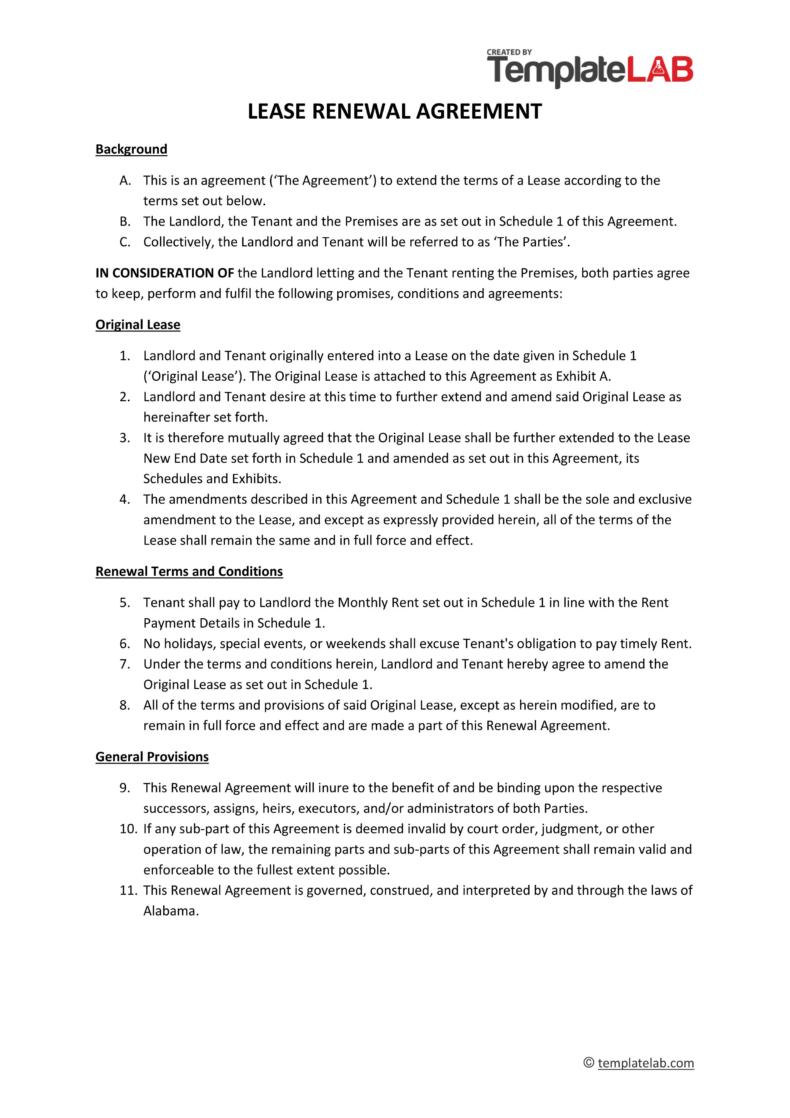Most lease agreements between landlords and tenants usually have an automatic renewal clause that will go into effect unless either party gives notice that they won’t renew the lease anymore. In such a case, it is a standard practice for the landlords to send a non-renewal notice to the tenant. This serves as legal notice that they will not renew the existing lease anymore. As a tenant, you may decide not to renew your lease also. In such a case, you can send a not renewing lease letter to landlord to your landlord that you will not continue renting their property.
Table of Contents
- 1 Not Renewing Lease Letters
- 2 What is a not renewing lease letter?
- 3 Notices Of Non Renewal Of Lease
- 4 Why do you need this document?
- 5 What to include in the document?
- 6 How do you say you don’t want to renew your lease?
- 7 Not Renewing Lease Letters To Landlord
- 8 Preparing to write the letter
- 9 Writing the letter
- 10 Tenant Non Renewal Of Lease Templates
- 11 What will your landlord do?
Not Renewing Lease Letters
What is a not renewing lease letter?
A notice of non-renewal of lease is a written notice given by a landlord to a tenant, or vice-versa. It informs the other party that the existing lease will no longer get renewed. Depending on the practices of the real estate market in your locale, you may also call this a lease termination letter, notice of intent to vacate, a notice not to renew the lease, or a non-renewal of lease letter. You should send this letter before the end of the existing current lease.
It is the norm to send this letter 60 days before the termination date of the existing lease. But the exact number of days before sending this letter may vary depending on the conditions and terms of your lease. It will also depend on the landlord-tenant law where you reside. If the non-renewal letter isn’t delivered with enough notice, you might have to pay additional rent. If a landlord doesn’t give enough notice, they might be in violation of state and local housing laws. So you should do your research first well before you decide to write this letter.
Notices Of Non Renewal Of Lease
Why do you need this document?
If you want to move to a new place, you need to inform your landlord that you plan to move out. For landlords who have decided to end their relationship with their tenants, they should also provide notice. Either way, the best way to do this is through a not renewing lease letter sample. This is a notice from either you or your landlord that you don’t want to extend the lease anymore.
If you send this document to your landlord, it will make it easier for you to prove that you have officially stopped renting that property. The document will also serve as proof of separation in case you encounter any post-lease expenses or fees unrelated to damage in the rented property.
The lease non-renewal letter can vary depending on who writes it. For instance, some landlords request a letter in the mail when it’s time for tenants to renew their leases. As a tenant, you can send back a signed letter detailing whether you plan to extend your lease or not. There are also landlords who might request in-person or digital confirmation of a continued lease. Either you or your landlord can deliver a lease non-renewal letter as an attachment in an email or you give the document in person.
Lease non-renewal notices work just like a 2-week work notice. As a tenant, the information you would include in the letter will notify the landlord that they can place the property back on the market for other interested renters. Providing early notice will give your landlord time to find a new tenant to take over the lease, which will limit the financial losses they might incur.
As for landlords, the letter can also prove beneficial if they don’t want to rent out their property anymore, for whatever reason. For instance, they might choose to sell their property. Another reason is that the landlord might be wanting to get rid of troublesome tenants. Or the landlord wants to leave their property vacant for maintenance or repairs so they can rent it out at a higher price.
What to include in the document?
A lease non-renewal letter is an official document used by landlords or tenants to prove that the other party has given official notice that they won’t extend their lease. A letter should include:
- The date when you wrote the letter.
- The tenant’s name and the address of the property.
- The landlord’s name and their business address.
- The date when the lease ends.
- The reason for not renewing your lease.
- The tenant’s requirements, like continuing to pay the rent or scheduling an inspection before moving out.
- The amount of the security deposit and the return policy.
How do you say you don’t want to renew your lease?
There are many options when your lease comes to an end. You can either move out, keep renting on a monthly bases depending on your state laws and your agreement, or sign a new lease. For landlords, they may either terminate your lease or increase your rent as part of a new lease. State laws require either a 30 or 60-day notice before you must leave the property.
In most states, tenants who stay beyond the end date of the agreement without signing a new lease shift to a month-to-month lease automatically. Whatever your decision is, it’s recommended to communicate with your landlord clearly by writing what you plan to do when your lease ends. Follow these steps if you don’t plan to renew your lease:
- Under your existing agreement, you might have an obligation to provide notice to your landlord if you plan not to renew your lease when it ends. It’s recommended to put this decision in writing. Remember that many landlords are very meticulous when it comes to keeping and returning security deposits. Giving your letter will remind your landlord that you expect to receive your security deposit. Putting things in writing will help protect your interests. For instance, it will create a record that you requested your security deposit since you plan to leave.
- After vacating the property, it will be your responsibility to inform your landlord of your new address in writing. This way, your landlord can send your security deposit to you. You should really consider writing this letter to remind your landlord of your expectations.
Not Renewing Lease Letters To Landlord
Preparing to write the letter
Before you start writing this letter, you need to do prepare for it. For instance, you have to check your existing lease for any possible penalties, then speak with your landlord or property manager first. Then do these steps:
Review your existing lease
As a tenant, it is very important to understand all the terms of your lease, especially if you plan to give notice that you will move out. You must provide a specific amount of advance notice – either 30 or 60 days – to avoid any issues. Spend some time going over each section of your agreement to confirm that the wording of your lease termination letter and your planned process of notification are in accordance with your existing lease.
Remember that if you break your lease, there might be some penalties and considerations to deal with. For instance, there are some leases that don’t require you to provide a written moving-out notice if your lease will expire. But there are different circumstances that will require you to provide your landlord with a lease termination letter if you intend to vacate the property. Writing a formal letter might be a requirement if:
- You will end your lease before the ending date of your agreement.
- Your original lease has specific terms, but you or your landlord didn’t renew those terms before renewing the lease. This causes you to go into a month-to-month lease automatically.
- You signed a lease that is specifically indicated as a month-to-month lease.
- You have a term lease that renews automatically, but you plan to vacate the property instead of allowing the auto-renewal of the lease.
Speak to your landlord if you have any questions
It’s recommended to speak with your landlord directly if you have any questions about the process of lease termination. It’s a good idea to bring a copy of your lease so you can point out any specific sections where you have questions.
Go over with your landlord what you must do so you can comply with all of the rules of your lease. You can also ask about your security deposit and other procedures for moving out. The US Department of Housing and Urban Development offers a section for tenant’s rights on their site where you can find the answers to your questions.
Give your letter
Generally, you need to provide written notice to your landlord if you plan to vacate your rented property. It’s essential to go over your lease to make sure that you have included all of the essential information.
Writing the letter
A tenant non-renewal of lease template is an official document that will notify your landlord beforehand that you don’t want to renew your existing rental agreement. You would usually send this letter when your current lease nears its expiration. It will provide your recipient with enough notice as specified by the laws of your state.
Often, this document will also include details about the inspection of the property before you move out and the return of your security deposit. Most landlords have their own template for this letter that will help them terminate lease agreements. Since the contents of the letter are very personal, landlords should customize their template to fit your specific situation. But if you will write the letter, here are some tips for doing so:
Write the date
Remember that the date in your letter is very important because most states have notice requirements for terminating a lease agreement. The date in your letter will prove that you have given your landlord sufficient time before the end of your lease.
Identify yourself
You need to identify yourself as the tenant so your landlord will know from whom the letter came from. If the landlord prepares the letter, they should specify this detail too. After identifying yourself, provide your contact details and mailing address too.
Identify your recipient
Below the address, indicate the full name of your landlord as shown in your lease agreement. The mailing address would be your landlord’s address. Add a subject line that describes your letter’s intent, which, in this case, is to terminate the lease.
Indicate the address of the rental property
A legal document like this letter is very specific. You must be very specific too. From the existing lease, include the lease dates and periods of the existing agreement. Also, write down the address of the property you’re renting.
Indicate the date of termination
In your letter, you should also explain your intent not to renew the lease agreement. Also, indicate the termination date or the date when you plan to leave the property. If you leave on the same date when the lease ends, refer to the existing lease to find the exact date. Then provide a short explanation for why you want to terminate your lease.
Send your letter
Although you don’t have to go into too much detail about why you’re terminating your lease, it’s customary to mention this detail for proper records in case a dispute arises in the future. After finalizing your letter, affix your signature. Only then can you send it to your landlord.
Tenant Non Renewal Of Lease Templates
What will your landlord do?
After your landlord receives your letter, they will do the following:
- Review the existing lease. Your landlord will check the existing lease to verify when your lease will end. Then they will send a letter in accordance with your state’s notice requirements. The landlord will also make a list of everything you should leave on the property. They will use this list during the final inspection before you move out.
- Inspect the property. The landlord will then inspect the property for any damage. They should document any damages that weren’t caused by the normal wear-and-tear. Pictures will serve as proof of any damage. Then your landlord will have you sign a moving-out checklist.
- Give your security deposit back. After you settle everything, your landlord will get your mailing address to process your security deposit within the timeline given by your state. Any damage you have done on the property will get appraised, then deducted from your security deposit.

